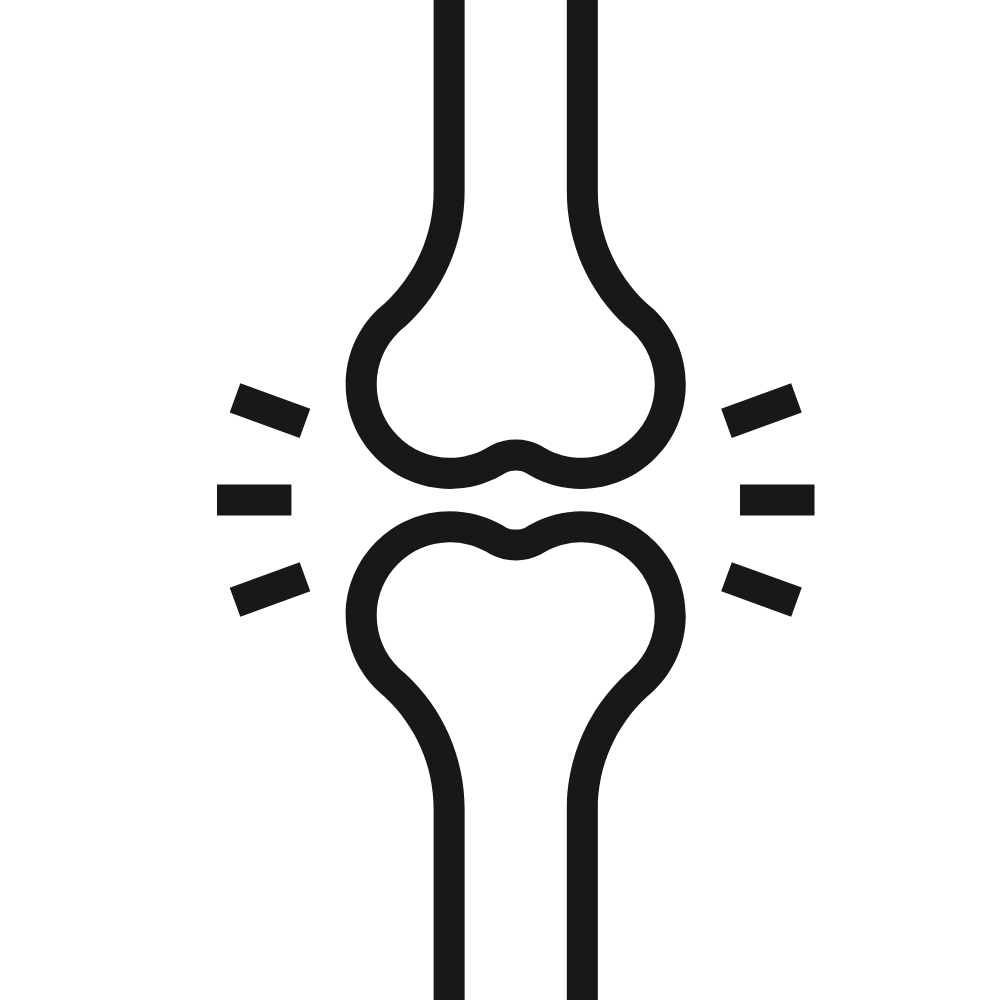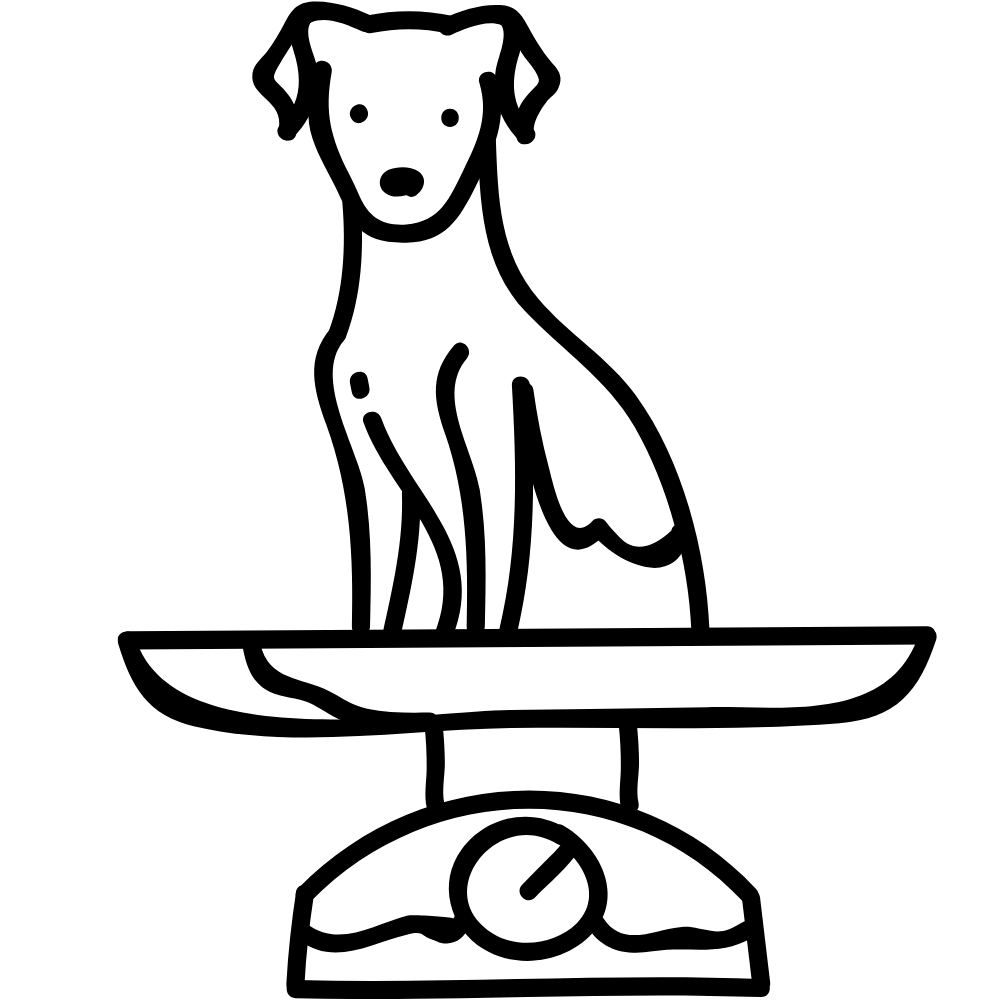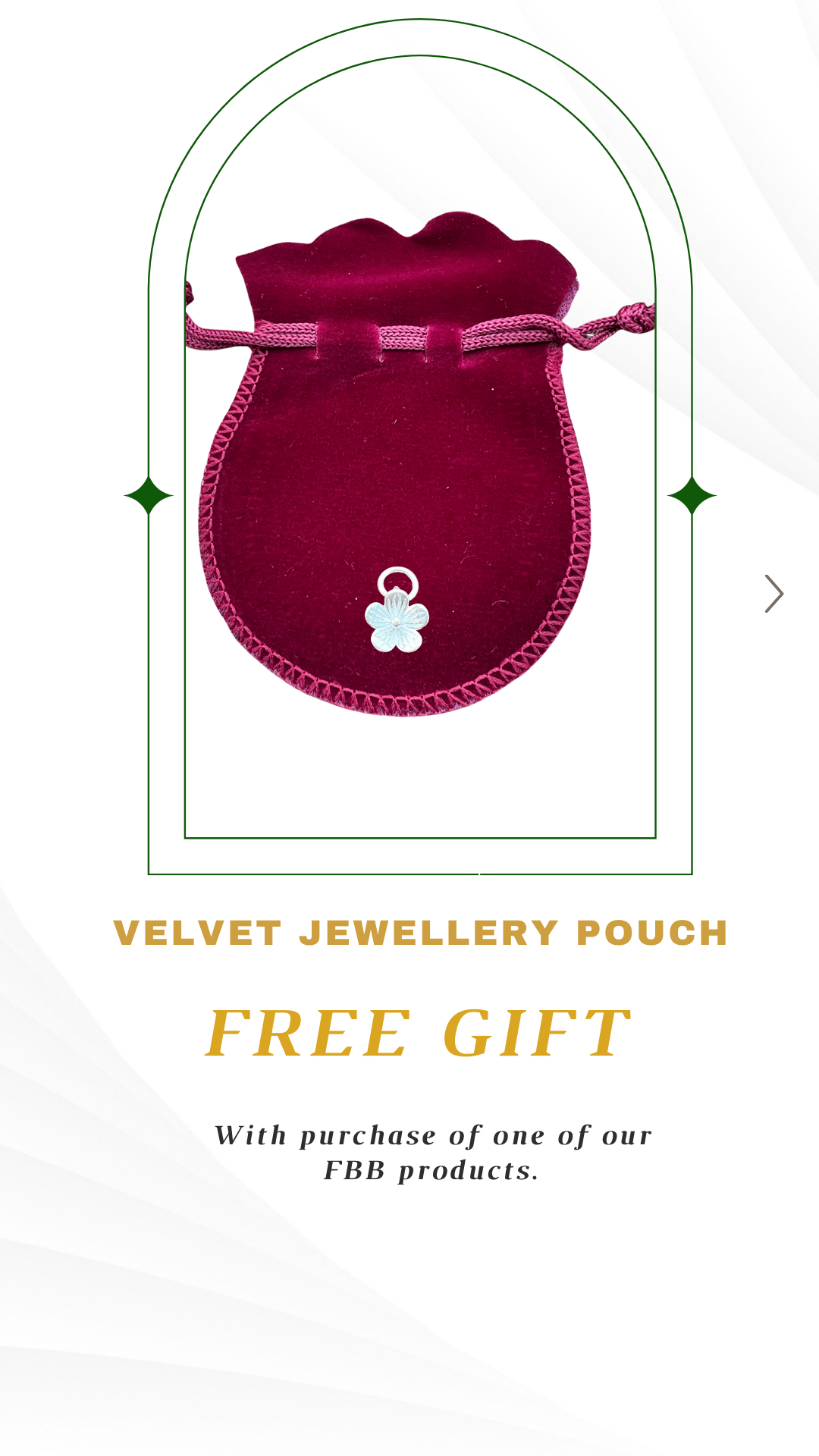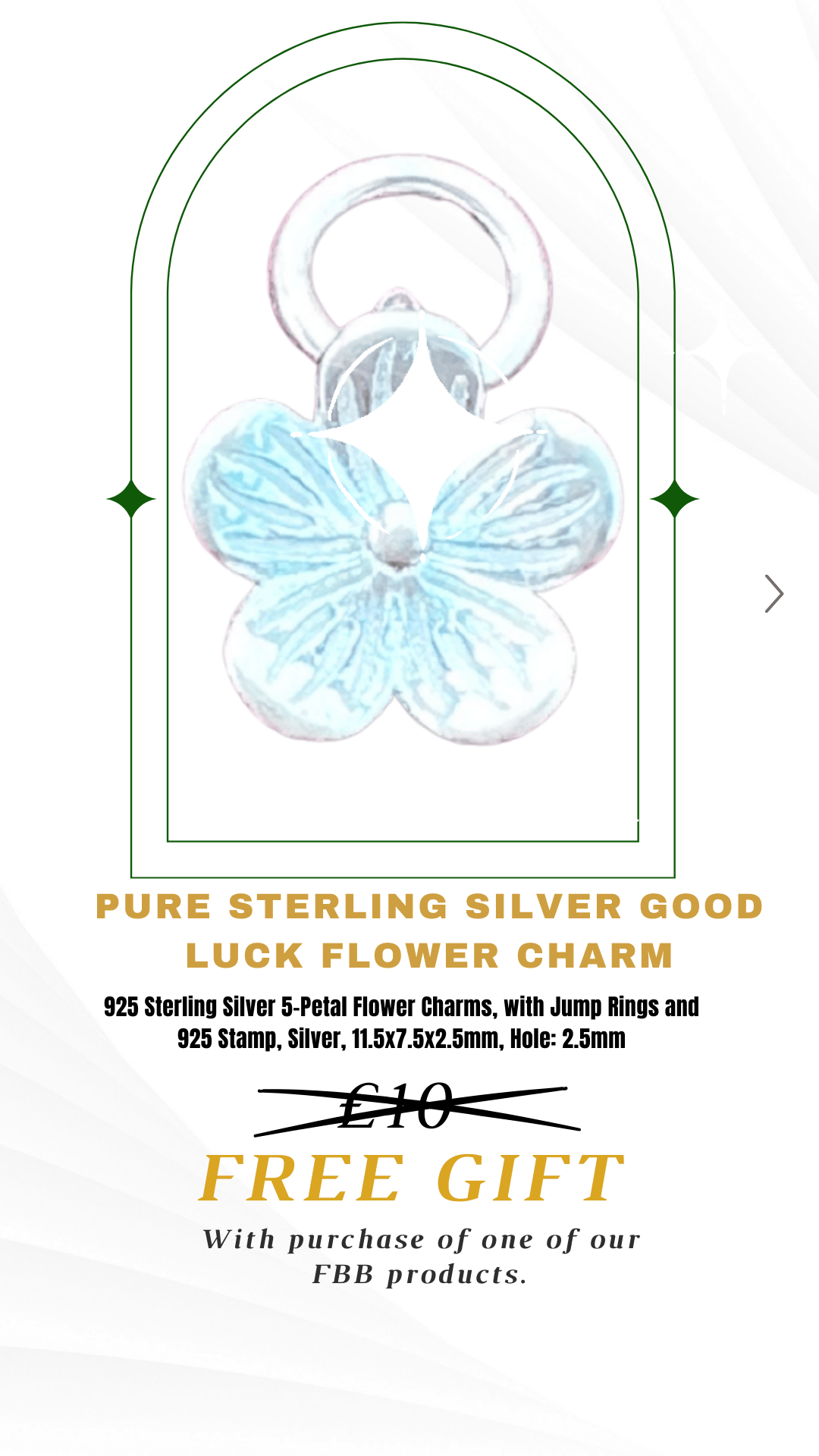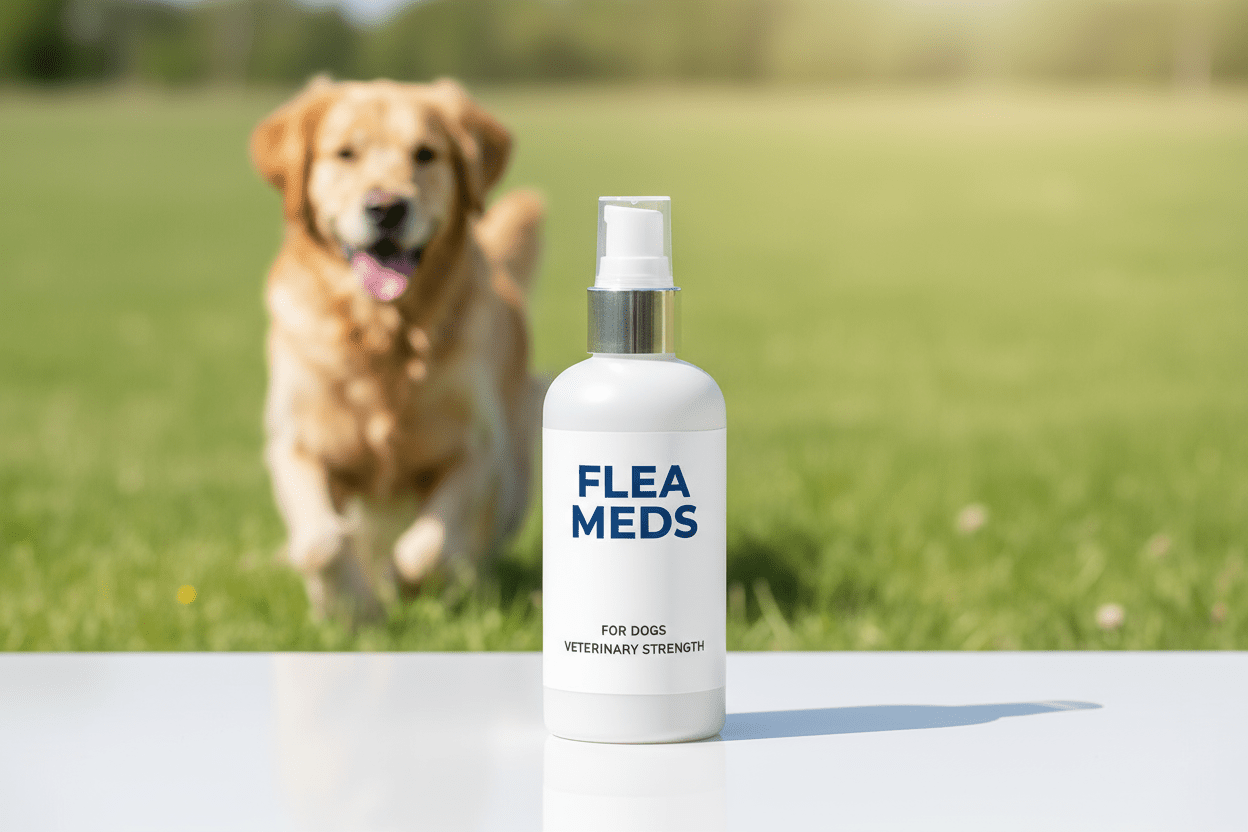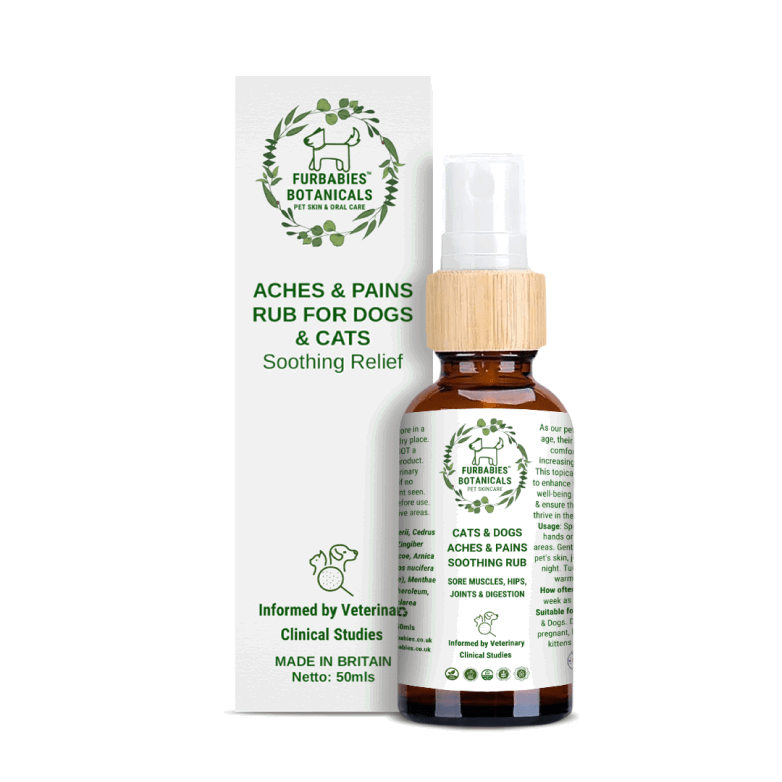
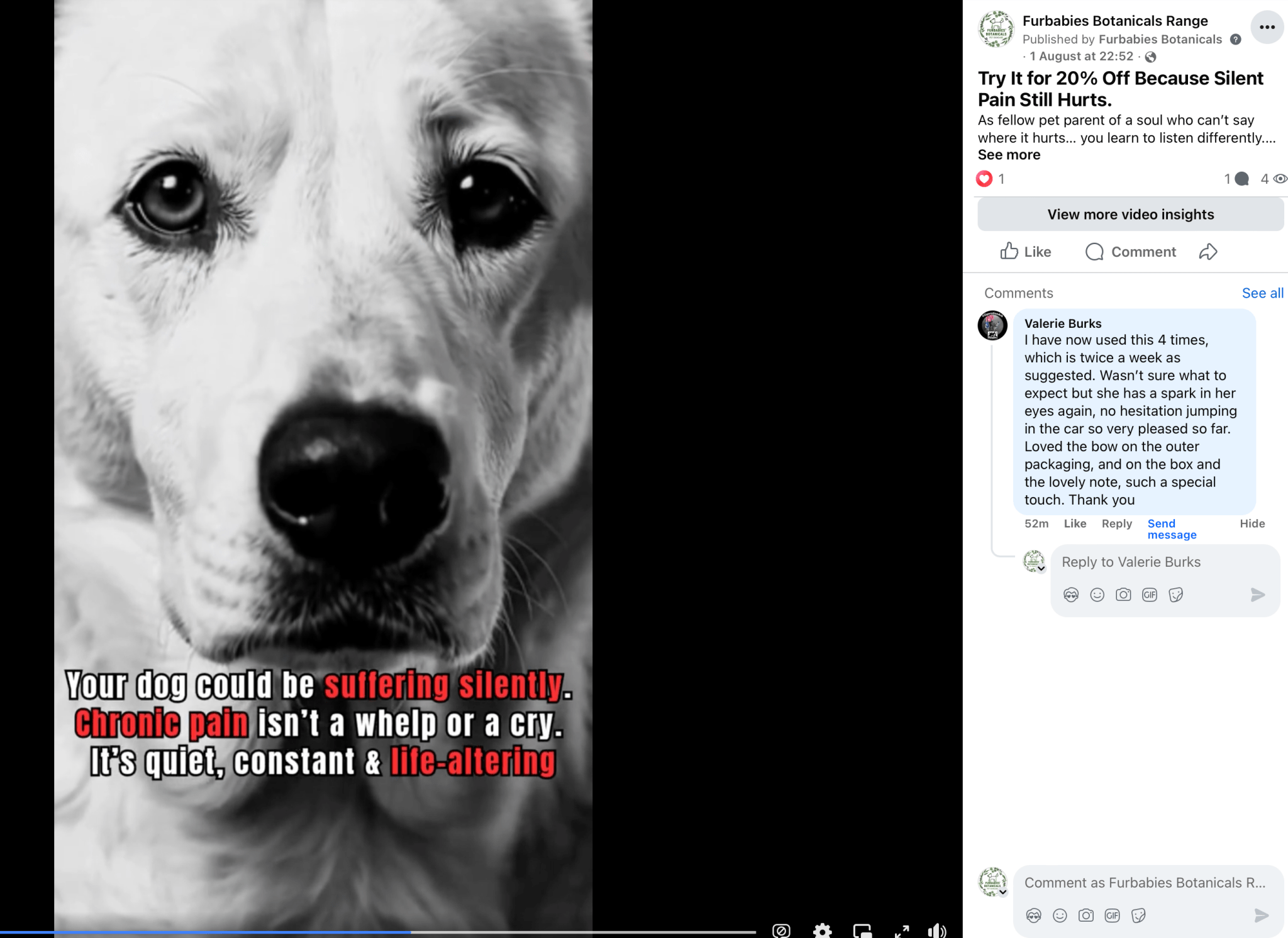
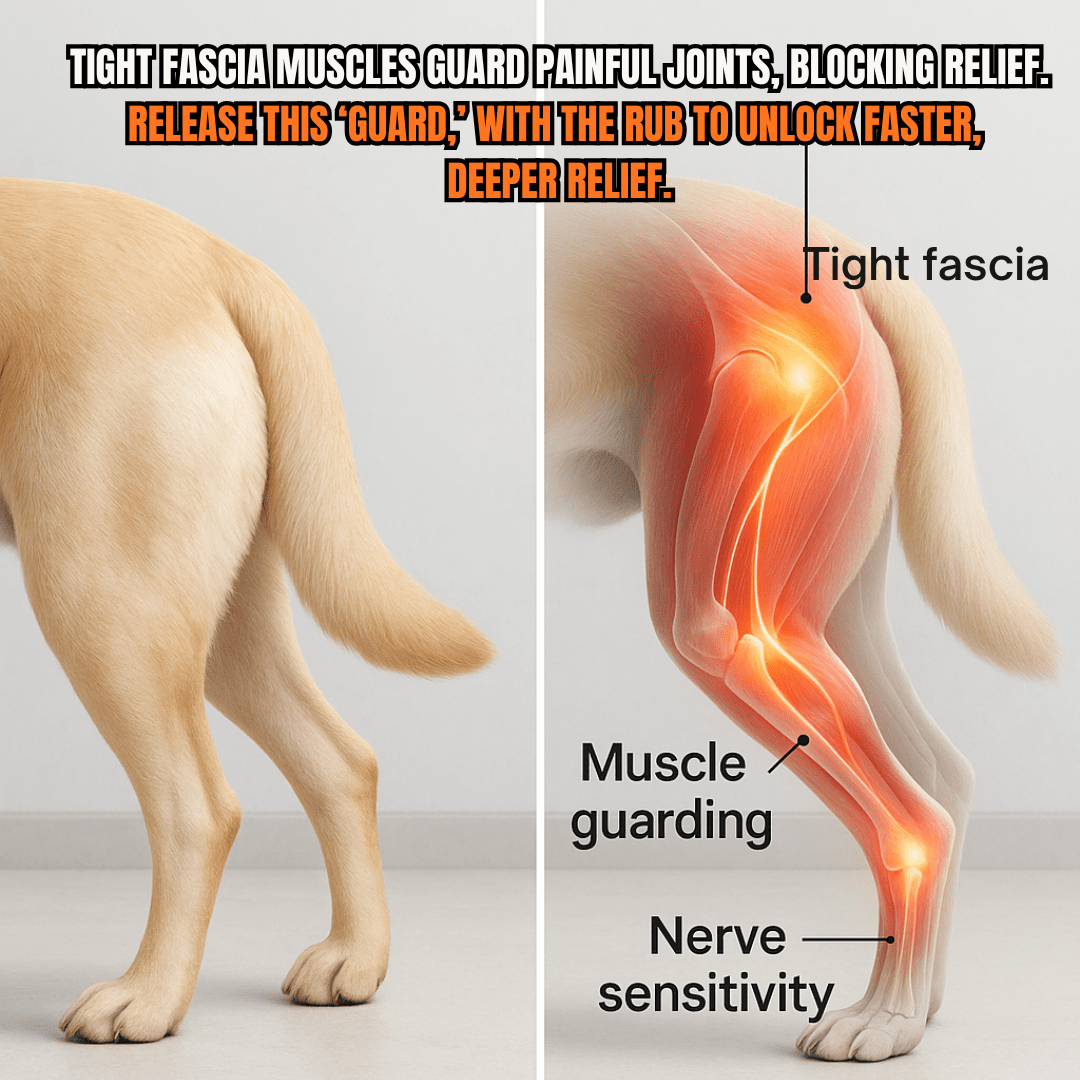
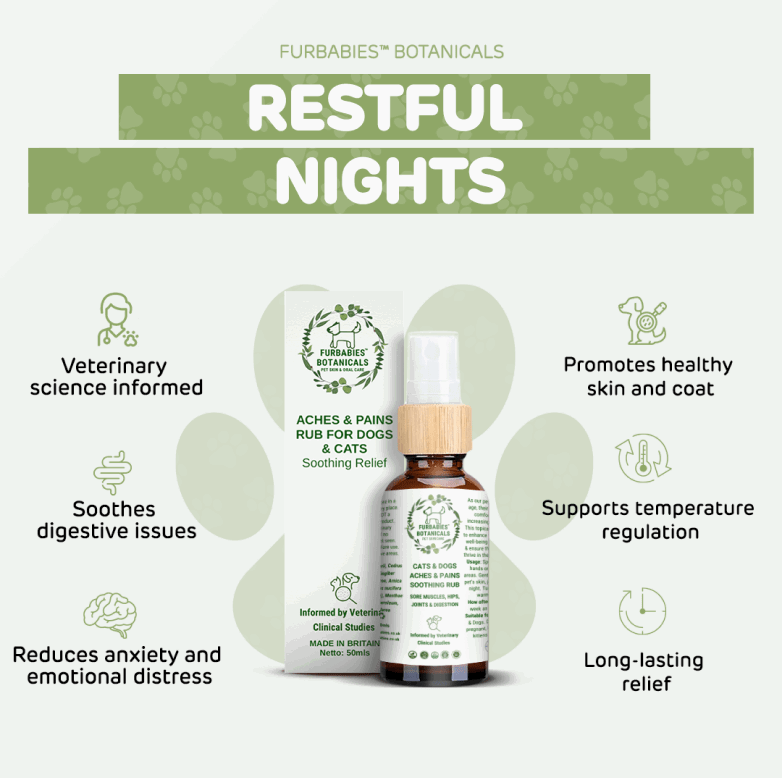





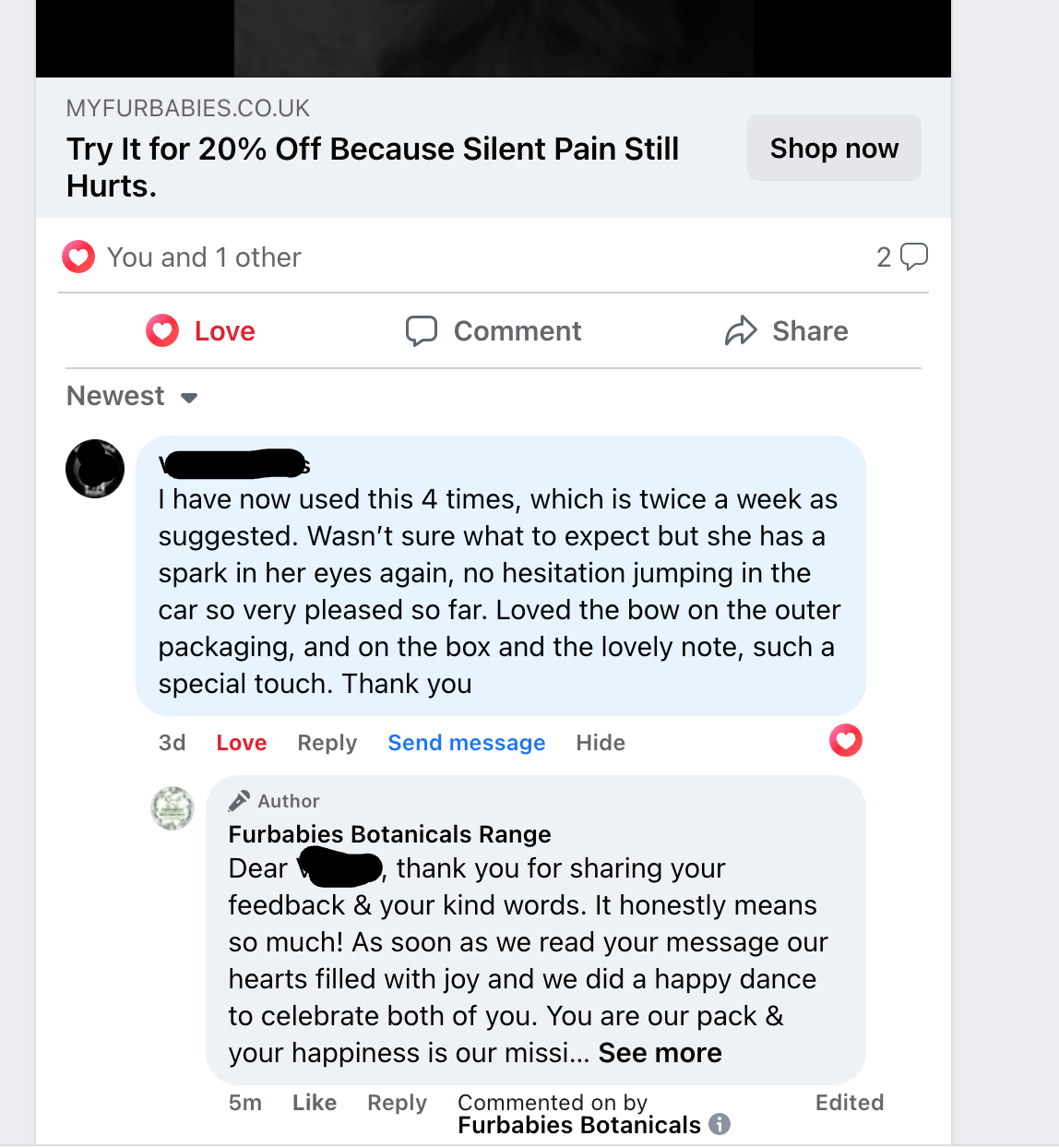
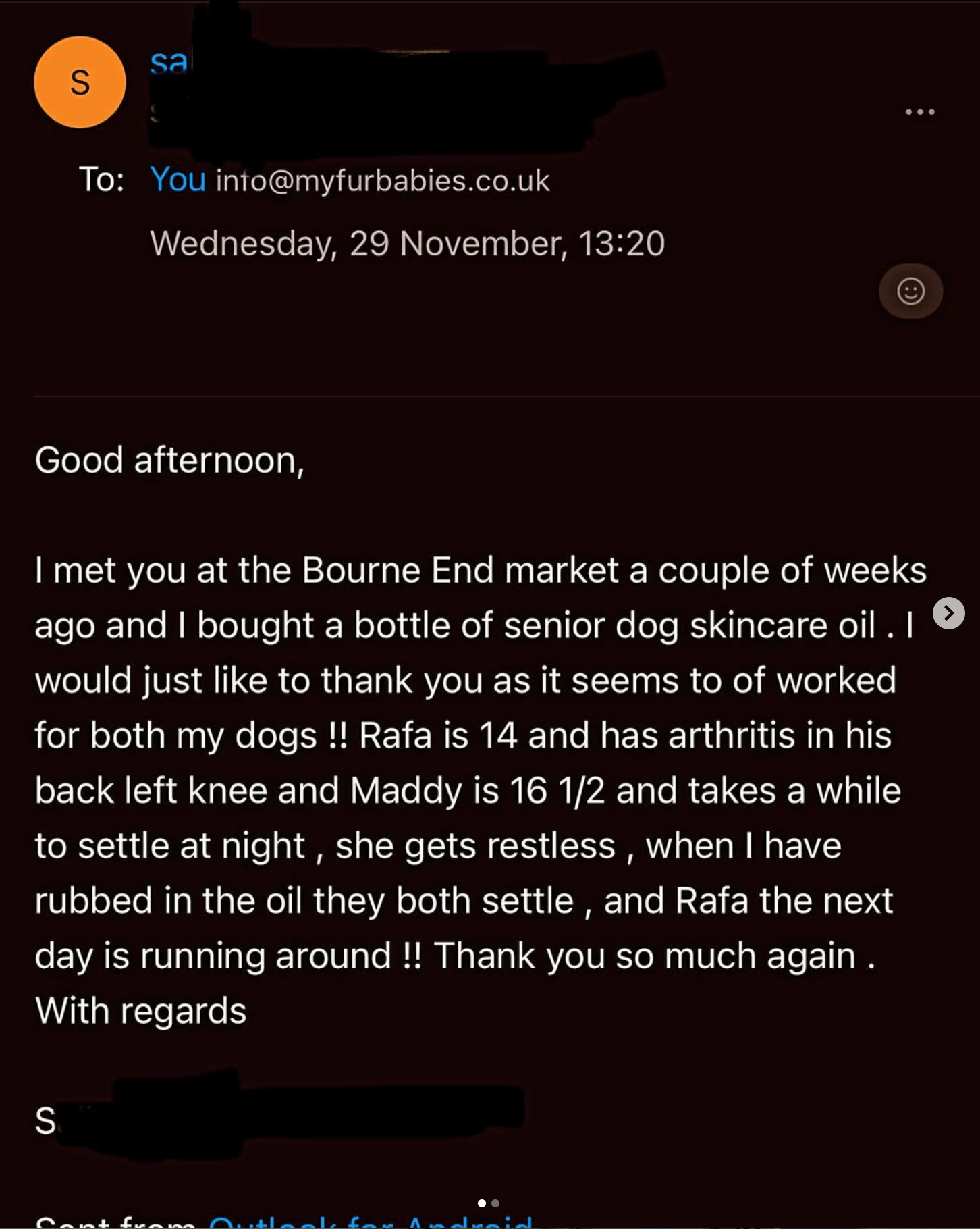
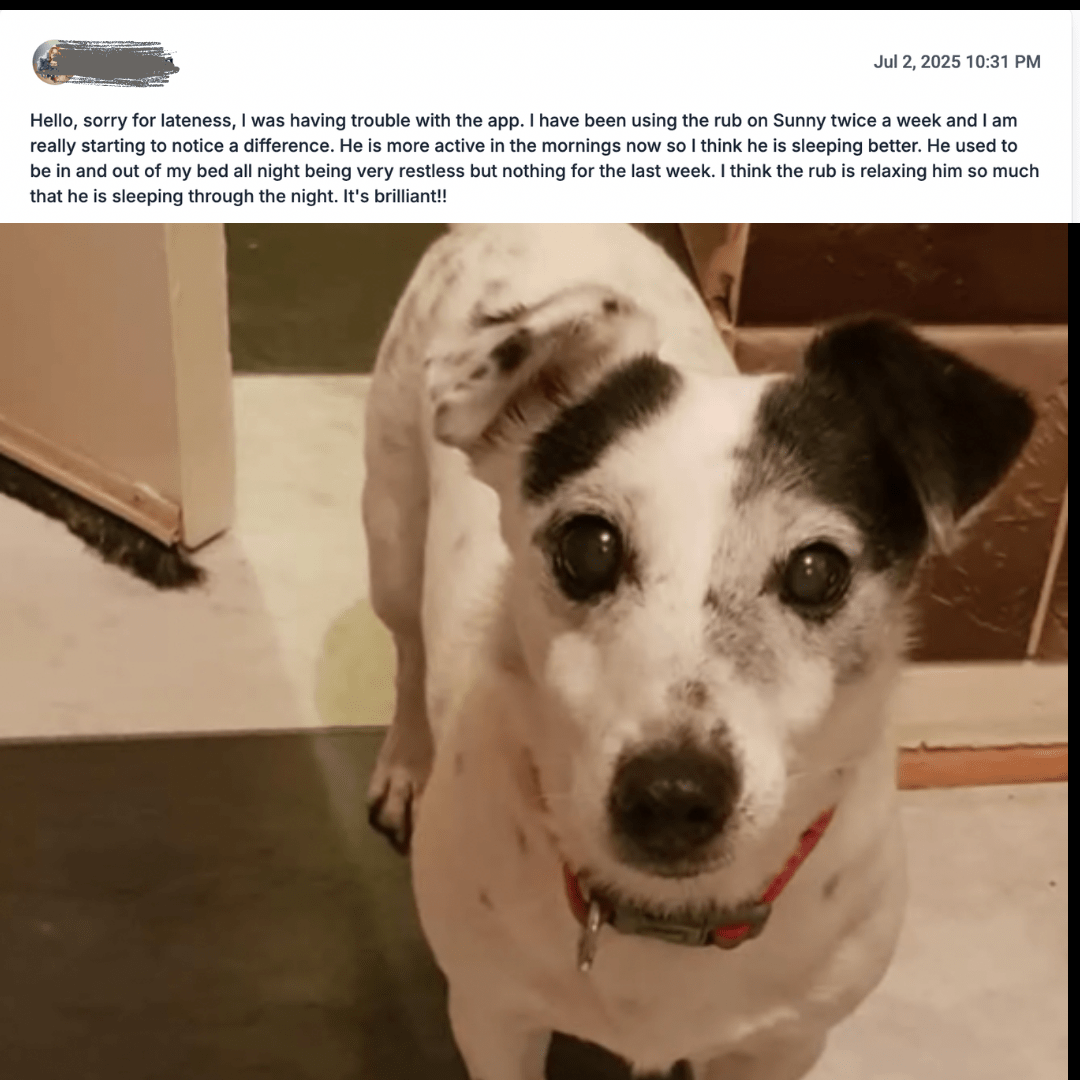
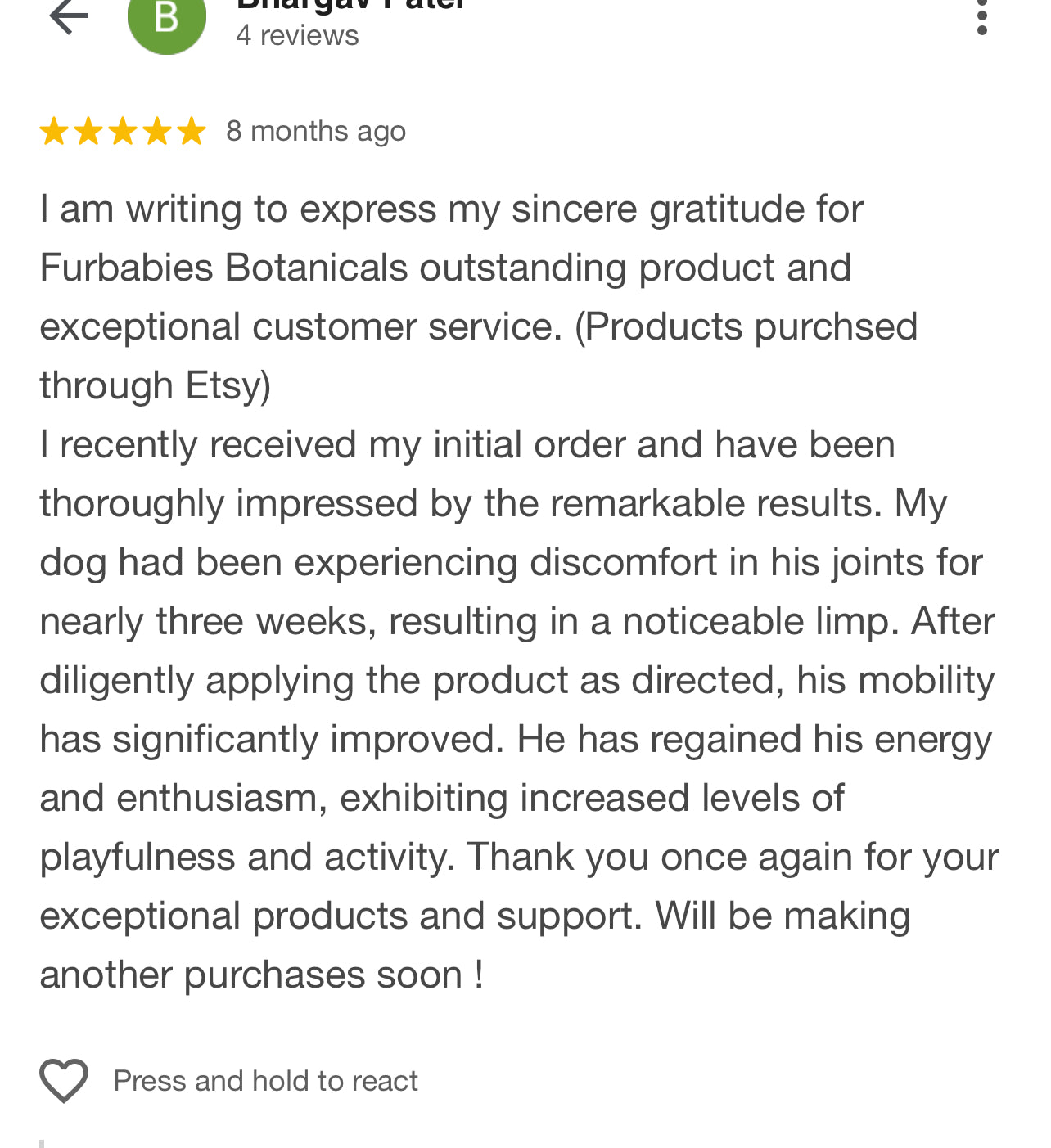
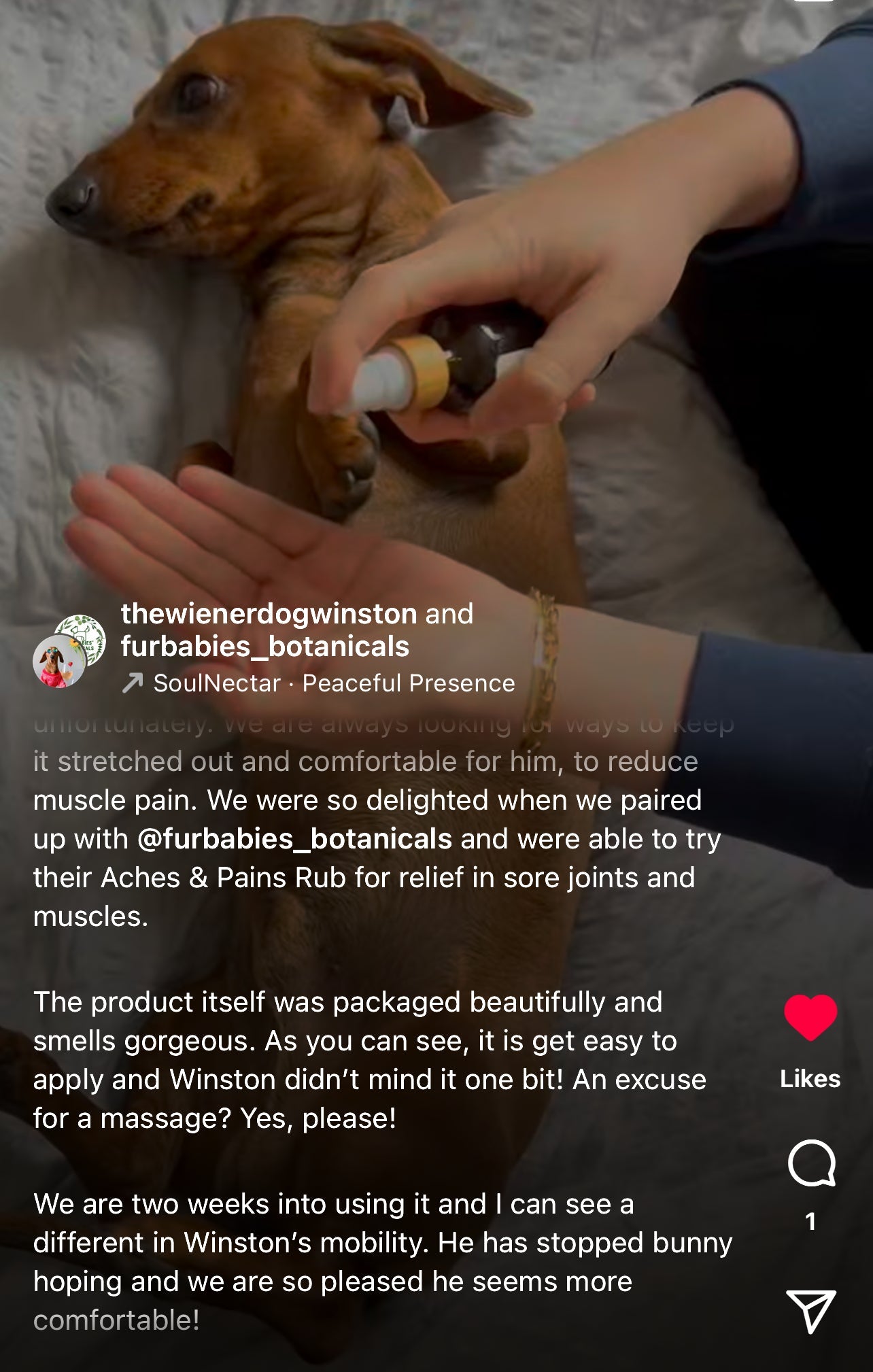
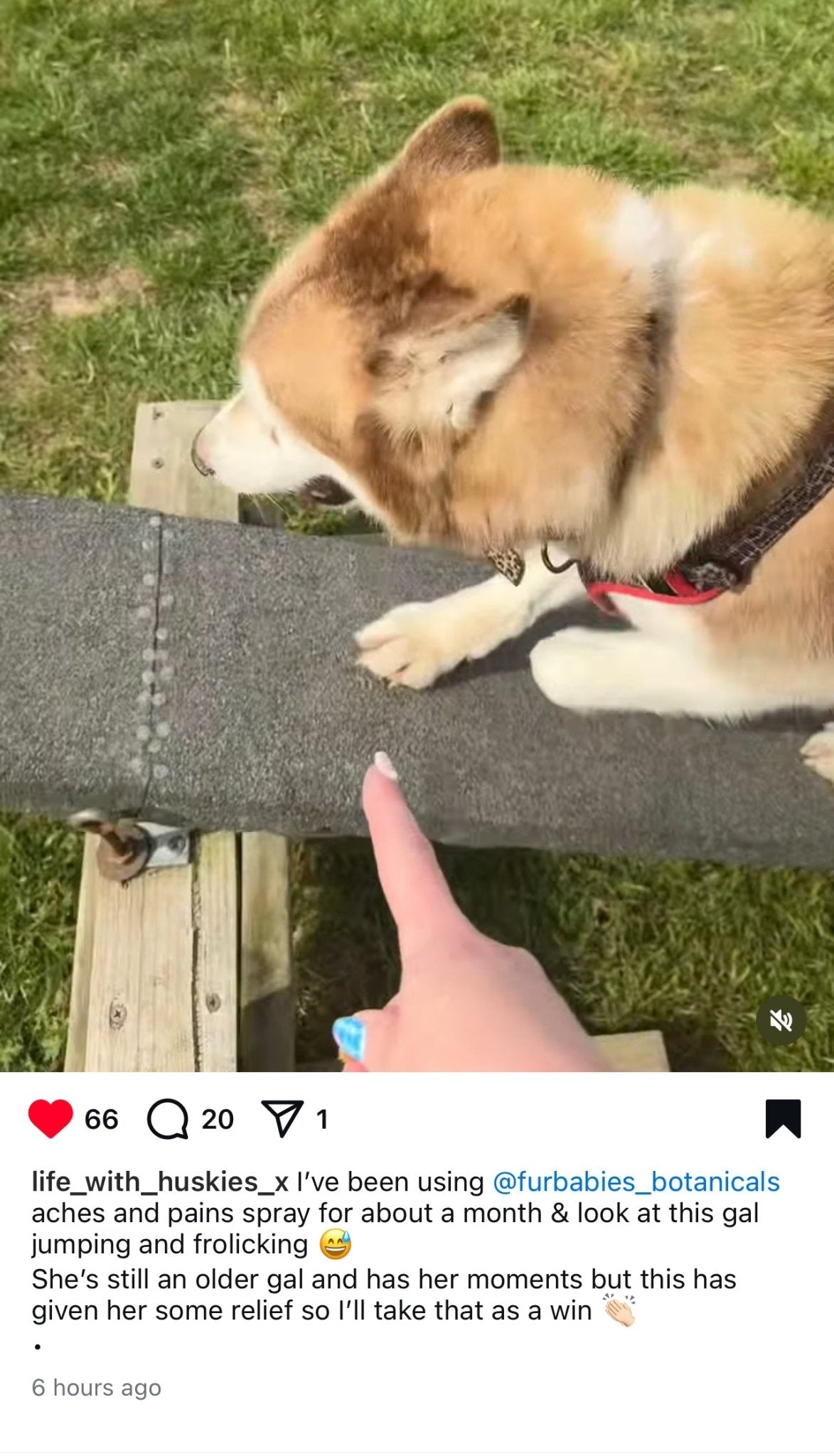
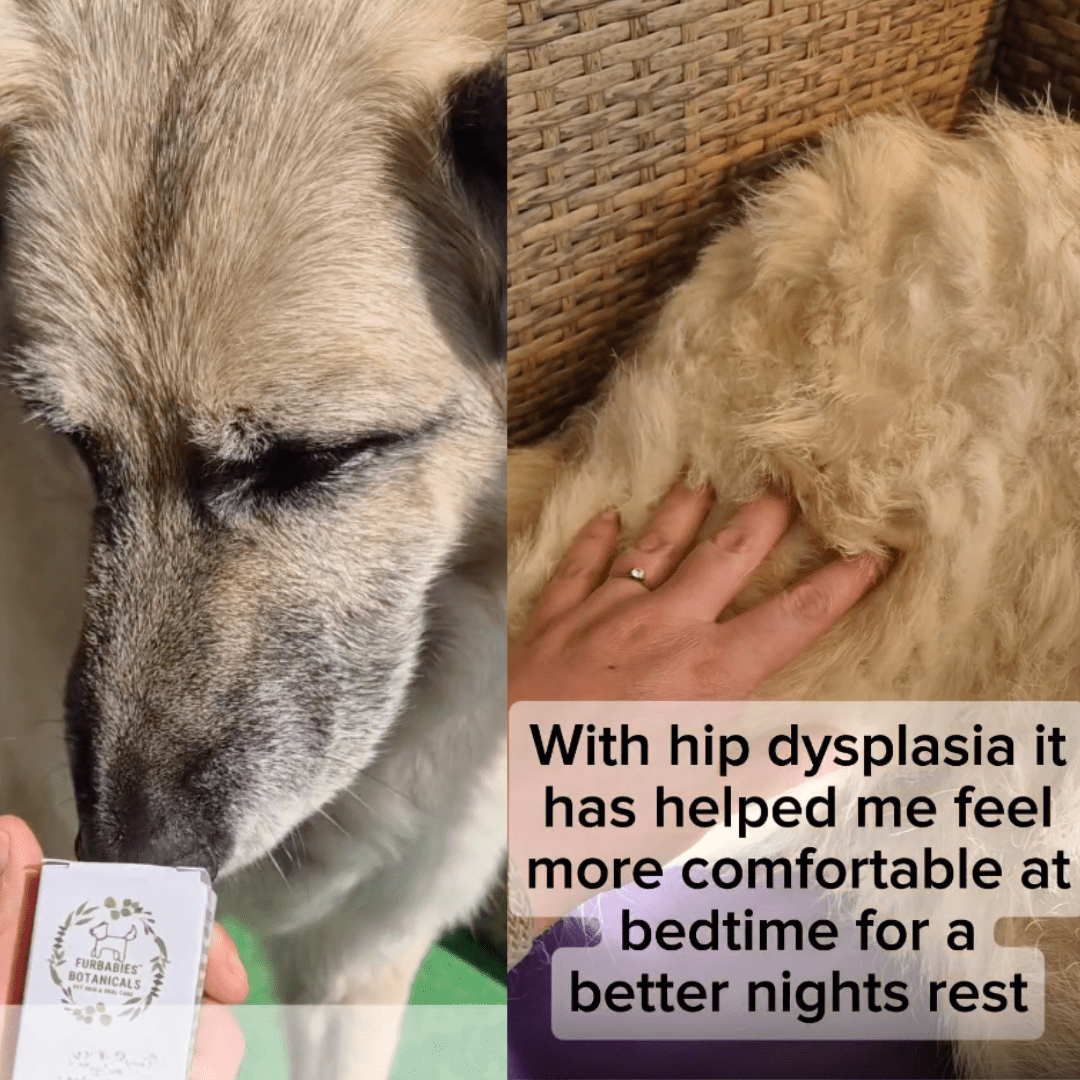

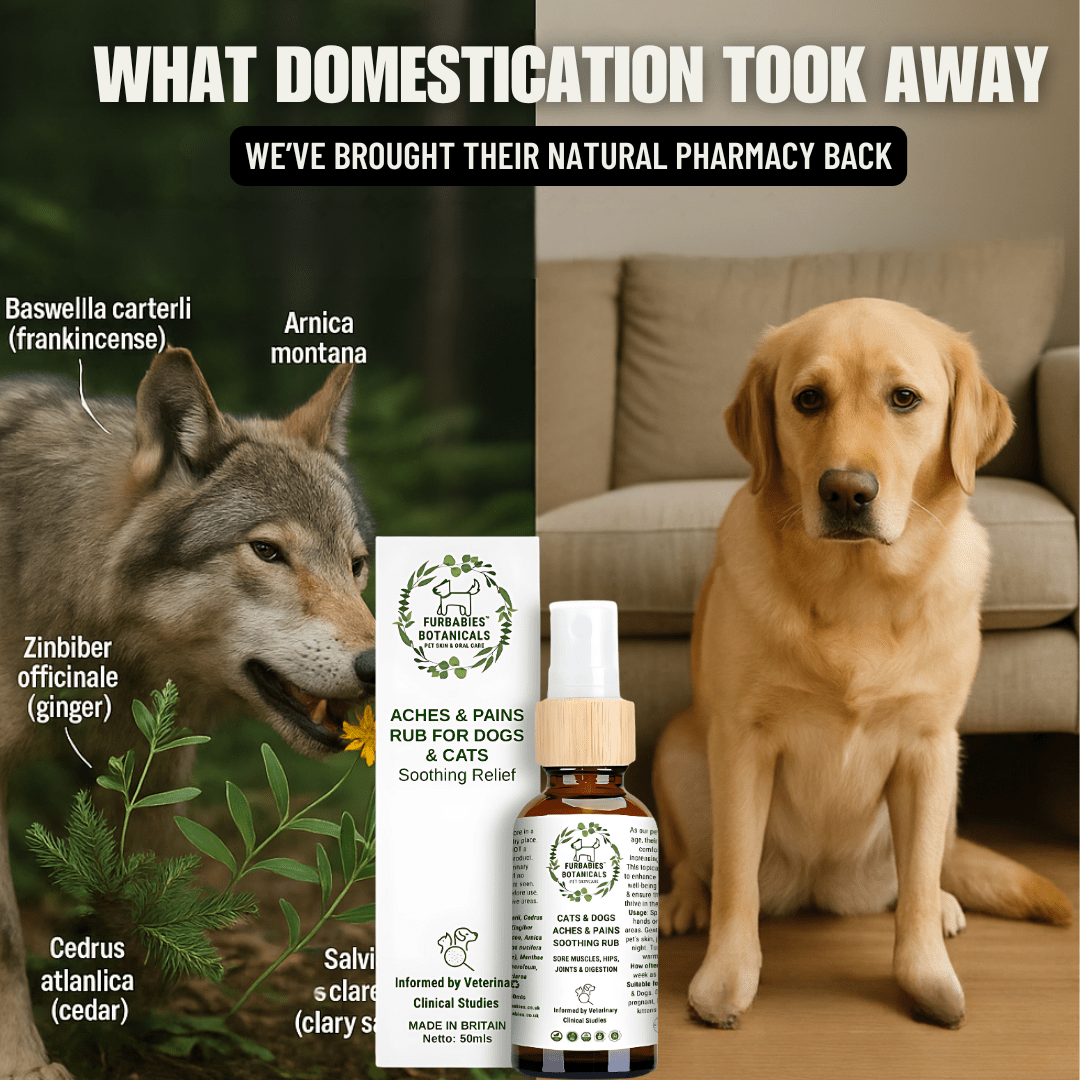

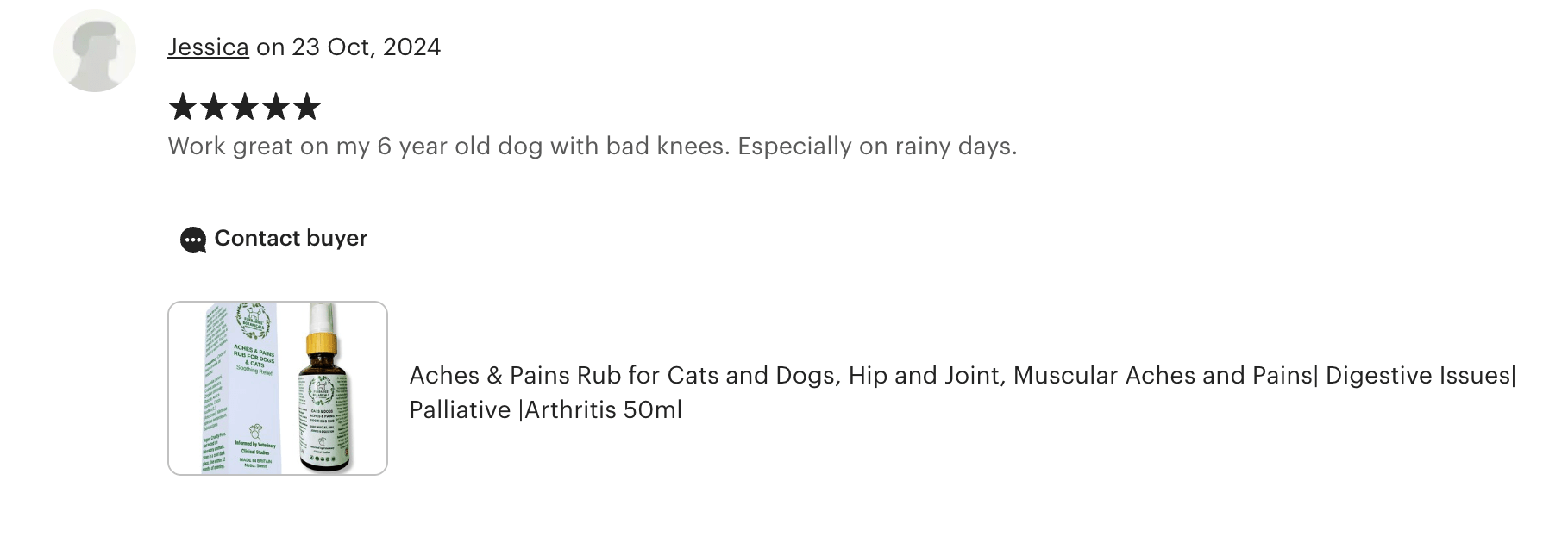
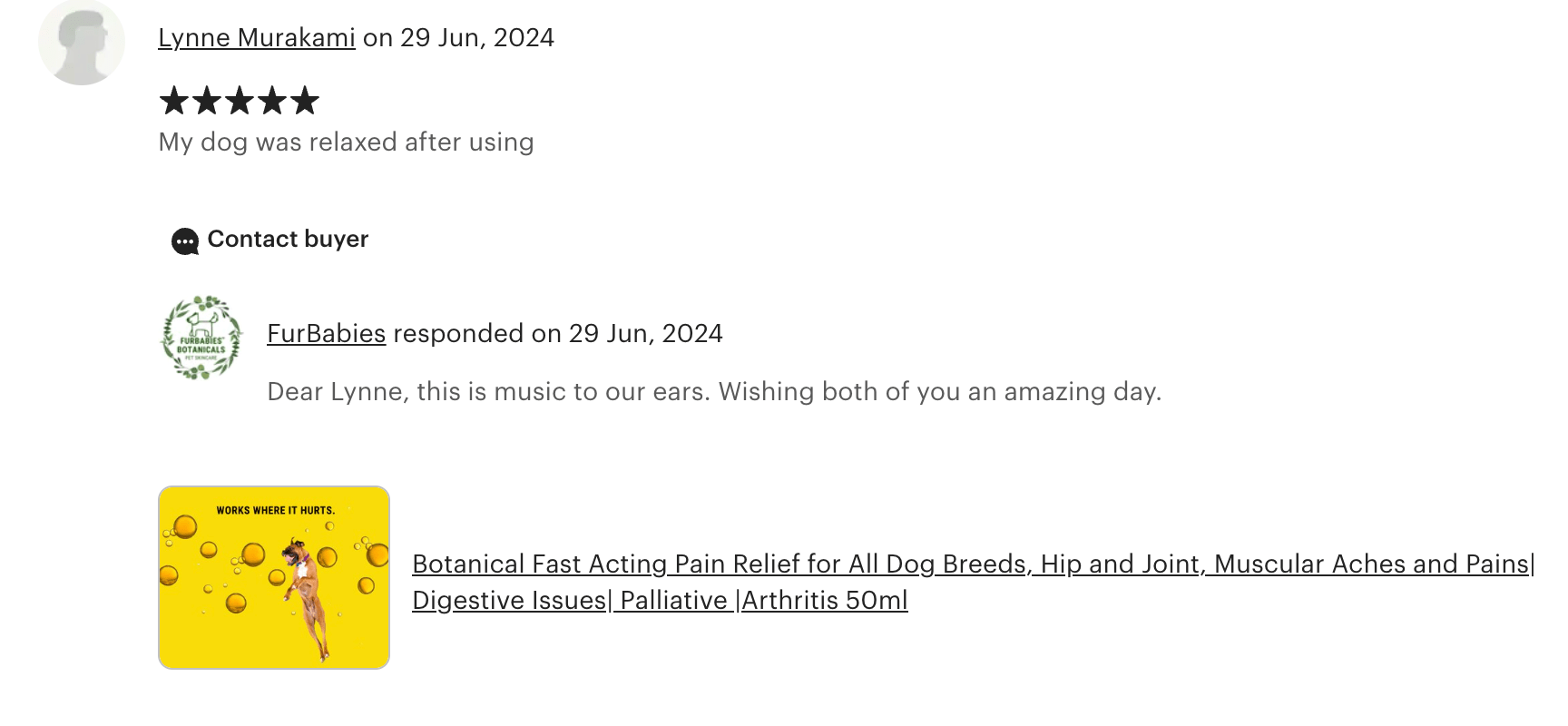
ACHES & PAINS RELIEF RUB FOR DOGS - HIPS, JOINTS & MUSCLES (50 ml)
Topical botanical formula for easing restlessness, night pacing, arthritis, hip dysplasia & general stiffness. No kidney, liver or stomach strain. Weekly application, One bottle lasts 4-5 months (30p/day).
One Weekly Rub. Real Relief. Bring Back Their Spark.
⭐⭐⭐⭐⭐ "Riley pushes up faster and follows us to the garden again" - Sam W., Surrey ✅ Trusted by 500+ Pet Parents Across the UK.
- ✔ 30-Day Money Back Guarantee
- ✔ FREE Vet pharmacist support

ACHES & PAINS RELIEF RUB FOR DOGS - HIPS, JOINTS & MUSCLES (50 ml)
Hear From Our Happy Pet Parents
“No more 2 a.m. pacing.” Our Spaniel, Coco, used to circle the bedroom and sigh all night. Two weekly massages in, Coco settles within minutes and everyone sleeps.”
— Alex P., Manchester
“We noticed a change in the very first week. Riley (11-year-old Labrador) was taking forever to stand up after naps. Now Riley pushes up faster and even follows us to the garden again. It is not a fix it solution, but it makes a huge difference to his quality of life"
— Sam W., Surrey
“Bathroom breaks look easier.” Luna (9-year-old Cockapoo) had started straining to squat. After adding the rub to our Sunday routine, we see far less stiffness and Luna trots back with her tail up.”
— Priya, Glasgow
“We started on a twice-a-week routine and saw a shift fast.” Bella (10-year-old Golden Retriever) was limping after long walks. We now use the rub on Tuesdays and Fridays, sometimes a third time after big play days. Her stride looks looser and she settles without fuss at night.
— Emma, Leeds
“It became our bonding time.” Max (13-year-old mixed breed) actually comes and lies down when he sees the bottle. The gentle massage has turned into the calmest ten minutes of our week, and Max moves more freely after.”
— Jodie L., Bristol
“My vet noticed the difference too.” We still use prescribed meds, but the vet said his gait looks looser and to ‘keep doing whatever you’re doing.’ That felt amazing.”
— Mark from Kent
“On tough weeks we add a third application.” Daisy (Border Collie, 12) still loves her hill walks but pays for it later. We massage the rub in every Wednesday and Saturday, and a bonus session after any big hike. The difference in her recovery is night and day.
— Lucy M., Lake District

HOW TO USE
Apply at night time before bed. Shake the bottle. Spray the rub directly on to your pet's skin (part fur to access the skin) & follow the demonstration by Dr. Erica Kirsch (Head2Tail Mobility), for massage techniques. Massage the rub in from the top of the spine (neck area) to the shoulders, back, hips, knees & back of tail. Focus on the muscles holding the joint structures & observe your dog's cues. Happy bonding. Repeat once or twice a week.

WHO IS THE RUB FOR?
Arthritis & Hip Pain→ Not just stiff joints eased, real comfort for aching hips & dysplasia.
Struggling to jump, climb, walk or shaking legs → When chews only go so far, our rub restores comfort & mobility where they can’t reach.
Winter / Rainy Day Stiffness → Cold causes the fascia & muscles to clamp, adding extra tension to the unstable joints they hold.
Restlessness & Pacing at Night → Pain steals their sleep. Sleep loss steals their recovery. Our rub breaks the cycle, so they (and you) finally rest.
Low Mood, Sadness or Anxiety → Hidden pain drags down mood. The rub lifts spirits, calms nerves, and brings peace.
Dogs Who’ve Tried Everything & Still Hurt → When meds, chews, and powders aren’t need a bit of help, this is the gentle comfort that makes the difference.
Sensitive Tummies, Liver or Kidney Issues → Our rub bypasses digestion completely; relief without overload.
Study Reveals: Chronic Pain Drives Sarcopenia in Dogs, Risking Early Death Even With Meds and Chews.
Arthritis silently destroys muscle, erodes mobility, and shortens your dog’s time with you.
In humans, studies show that muscle loss (sarcopenia) accelerates mortality by 56% [Cruz-Jentoft AJ et al., 2010]. In dogs, this process is thought to be faster [Hetrick K. et al., 2022].
- Disuse atrophy: Pain prevents dogs from fully engaging their muscles, so fibers shrink over time.
- Loss of strength: Everyday movements like walking, climbing stairs, or standing become harder.
- Compounded stress: Weak muscles increase load on joints, worsening pain and stiffness.
Dogs with severe chronic pain may lose up to 25% of limb muscle, and welfare and happiness scores can drop up to 350% compared to healthy dogs [Malkani R. et al., 2023; Stevens C. et al., 2025].
Analgesics (NSAIDs) and joint supplements help manage stiffness and discomfort [Anderson KL et al., 2018; Alves JC et al., 2017], but they cannot fully engage muscles or stop sarcopenia.
Physical rehabilitation, like physiotherapy or hydrotherapy, is proven to improve mobility, reduce pain, and support muscle mass [Millis DL & Ciuperca IA, 2015]. However for many senior dogs, clinic visits are stressful, and adjusting to unfamiliar environments can limit the benefit.
Effective physiotherapy requires at least one session per week, with 30-minute sessions often costing £50–£80 each. Over time, this adds up and underlying muscle tension and fascial restrictions often persist between sessions, limiting results.
Aches & Pains Rub lets owners replicate key benefits of physiotherapy in the comfort of home:
1. Massage + rub releases muscle and fascial tension
2. Targets muscles around joints where pain hides
3. Supports circulation, reactivates stabilising muscles
4. Frequent use keeps muscles active and slows decline
5. Stress-free environment = better engagement and comfort
No stressful trips or missed sessions. Just consistent, hands-on care that helps maintain mobility, reduce discomfort, and preserve quality of life.
JOINT PAIN FACTORS TO CONSIDER
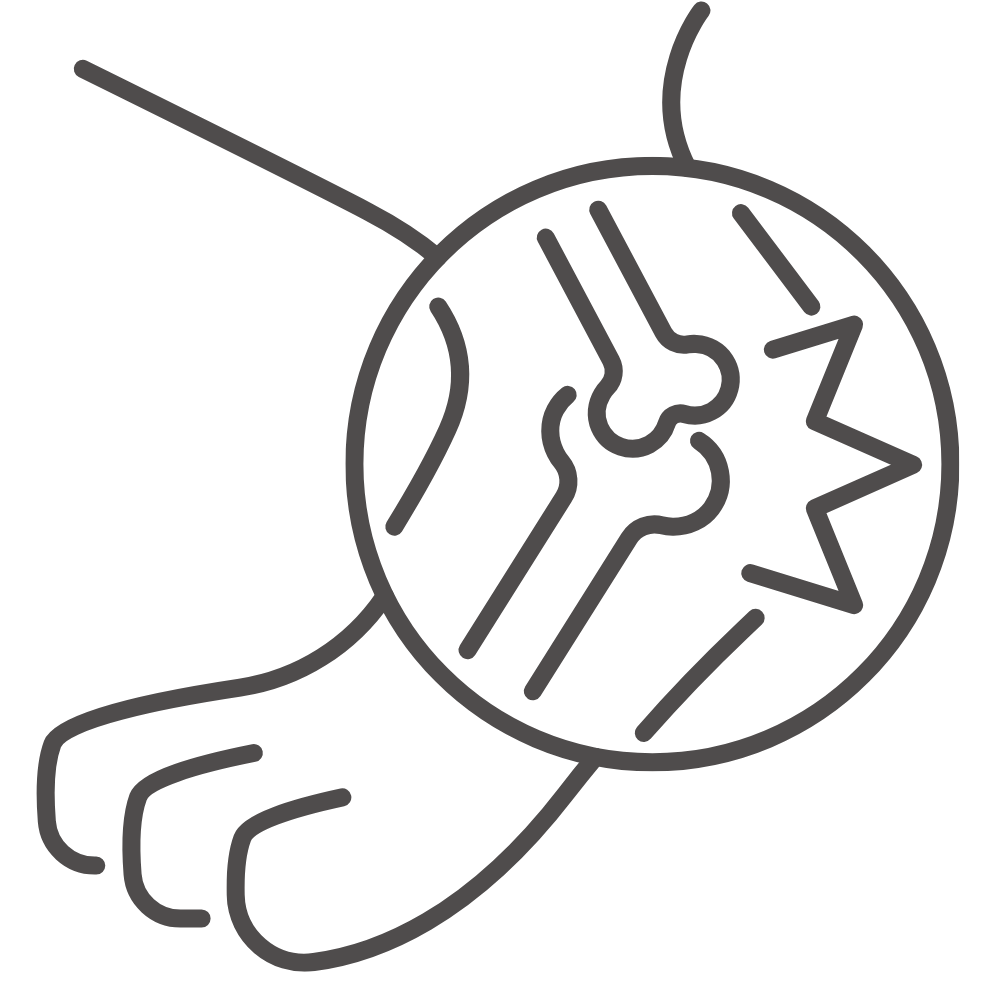
Degenerative Nature
Arthritis is a progressive destructive disease: cartilage wears down, joints stiffen & muscles tighten to protect sore areas. Chews & oral supplements ease inflammation temporarily, but they cannot halt tissue damage or restore lost strength. That’s why a multimodal approach combining pain relief, joint support & targeted care for muscles & fascia is key.
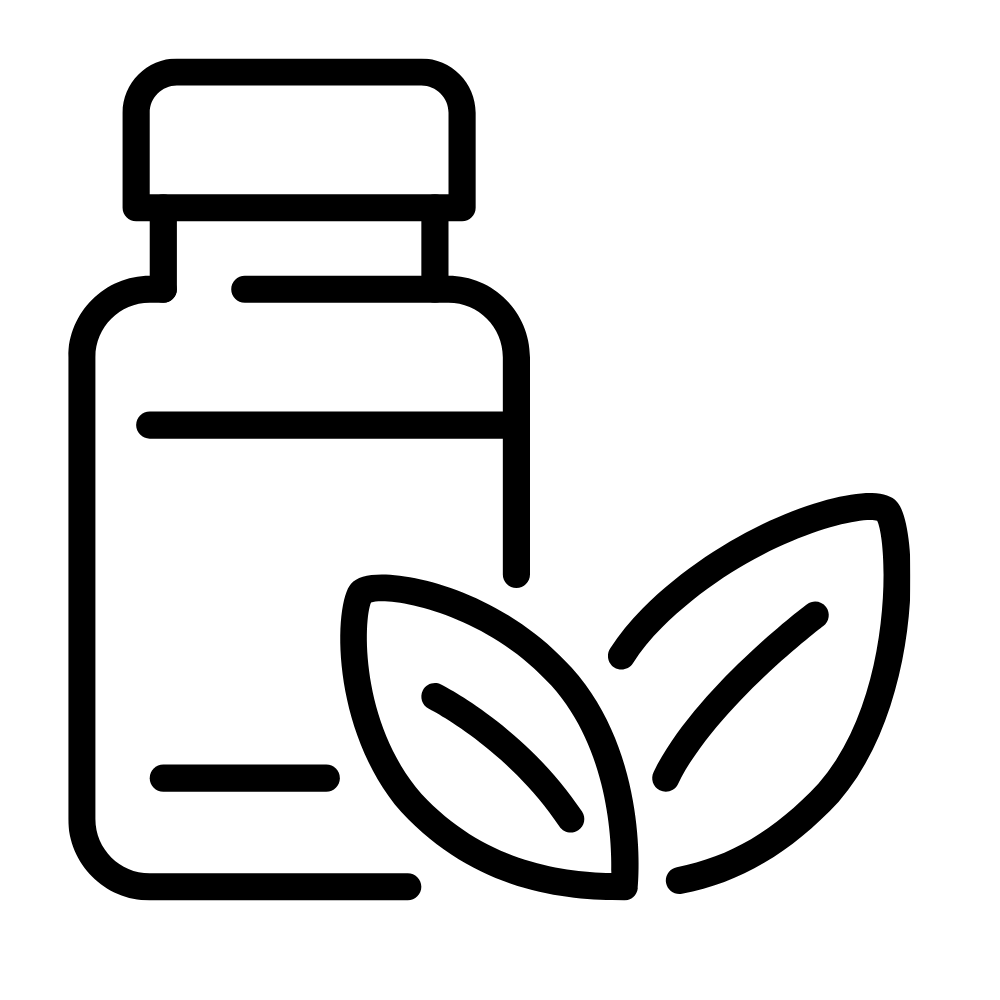
Joint Chews Fact
Glucosamine, chondroitin, collagen, green-lipped mussel, & hyaluronic acid don’t rebuild cartilage or replace joint fluid. They reduce inflammation temporarily, so dogs may appear to move better, walk more comfortably, or even jump. Movement looks improved, but deep stabilising muscles may still be underused and sarcopenia continues silently.

Jumping, sprinting & skidding
Tight muscles & fascia work overtime to stabilise joints, especially around hips, knees, and shoulders. This tension creates pain, restricts movement, & increases stress on the joint. Our rub calms overloaded muscles, improves circulation & supports fluid, pain-free joint motion.

Cold & Damp Temperatures
Cold weather and damp conditions slow circulation and thicken joint fluid, while tightening muscles and fascia make nerves more sensitive. For dogs with arthritis, this creates a perfect storm of stiffness, discomfort & reduced mobility. Our warming rub works perfectly for these conditions.

INGREDIENTS
In the wild, dogs’ ancestors had access to nature’s full pharmacy; a variety of botanicals that supported their joints, muscles & overall health. Domestication & modern diets have taken much of this away. Drawing on thousands of scientific studies and the expertise of integrative veterinarians, we developed a precision-dosed formula that brings the power of these natural ingredients back to your dog, targeting pain, mobility, and muscle support where it matters most
- Zingiber officinale (Ginger): Reduces inflammation, alleviates pain, and supports digestion with anti-inflammatory compounds and antioxidants.
- Cedrus atlantica (Atlas Cedarwood): Calms the nervous system, promotes relaxation, and reduces emotional stress.
- Menthae piperitae (Peppermint): Relieves muscle tension and discomfort, boosts mood, and promotes relaxation.
- Arnica montana: Alleviates pain and swelling, promoting relaxation and recovery with its anti-inflammatory properties.
- Salvia sclarea (Clary Sage): Eases anxiety, promotes emotional balance, and has anti-inflammatory properties.
- Boswellia carterii (Frankincense) : Reduces inflammation and supports joint health with powerful antioxidants and anti-inflammatory compounds.
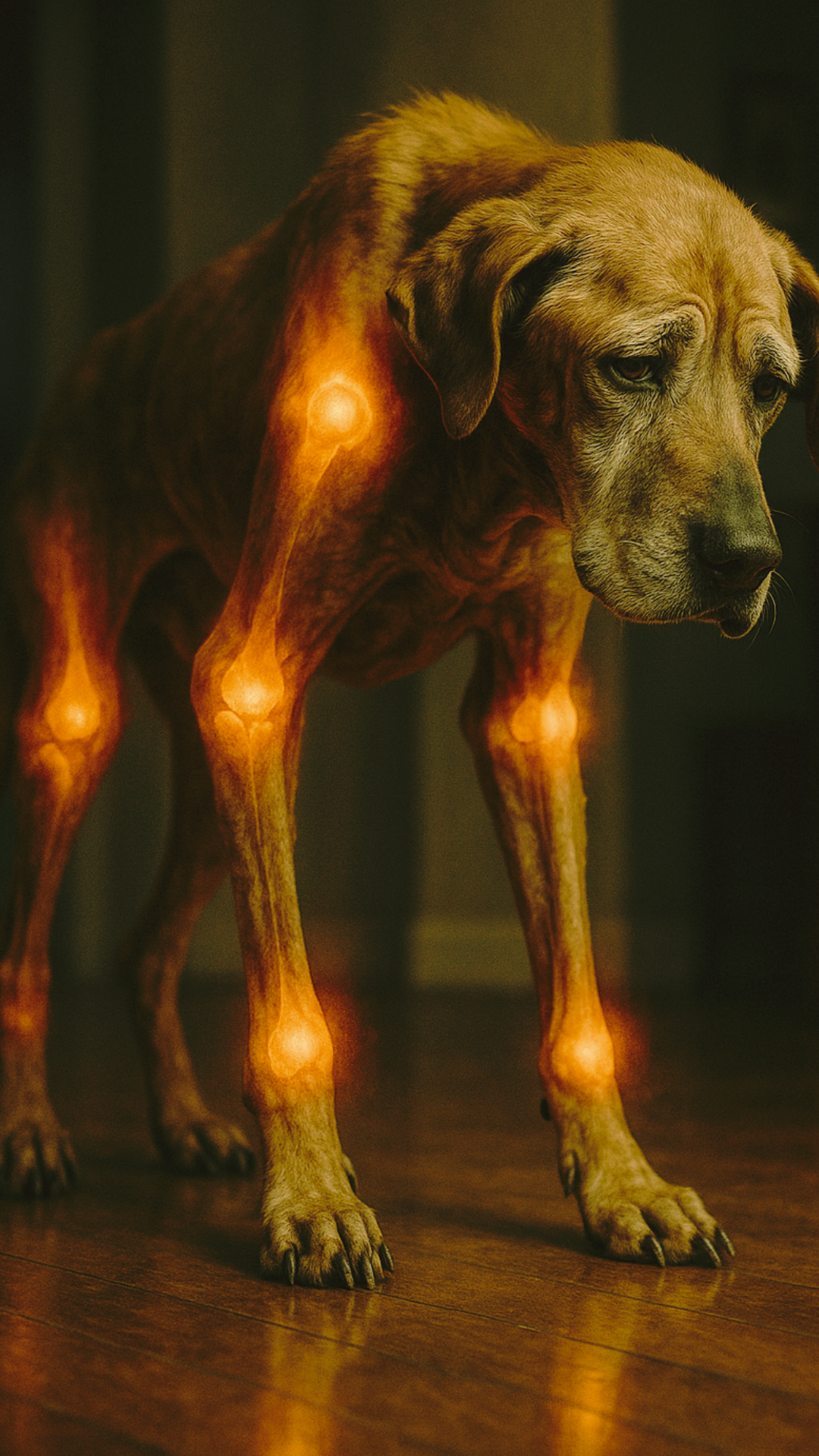
How Cold Weather Affects Your Dog’s Joints & Muscles
- Reduced circulation: Cold causes blood vessels to constrict, cutting oxygen and nutrient flow to joints, cartilage, and muscles, leaving tissues colder, stiffer, and slower to heal.
- Thicker joint fluid: Synovial fluid becomes more viscous in low temperatures, reducing lubrication so joints grind and stiffen more easily.
- Tightened muscles & fascia: Cold tenses muscles, tendons, and connective tissue, limiting flexibility and adding strain to already sore joints.
- Heightened nerve sensitivity: Chilly conditions can amplify pain signals, making achy joints feel even more painful.
- Added strain & injury risk: Less movement, slippery surfaces, and tense tissues increase the chance of strains or flare-ups in arthritic or aging dogs.
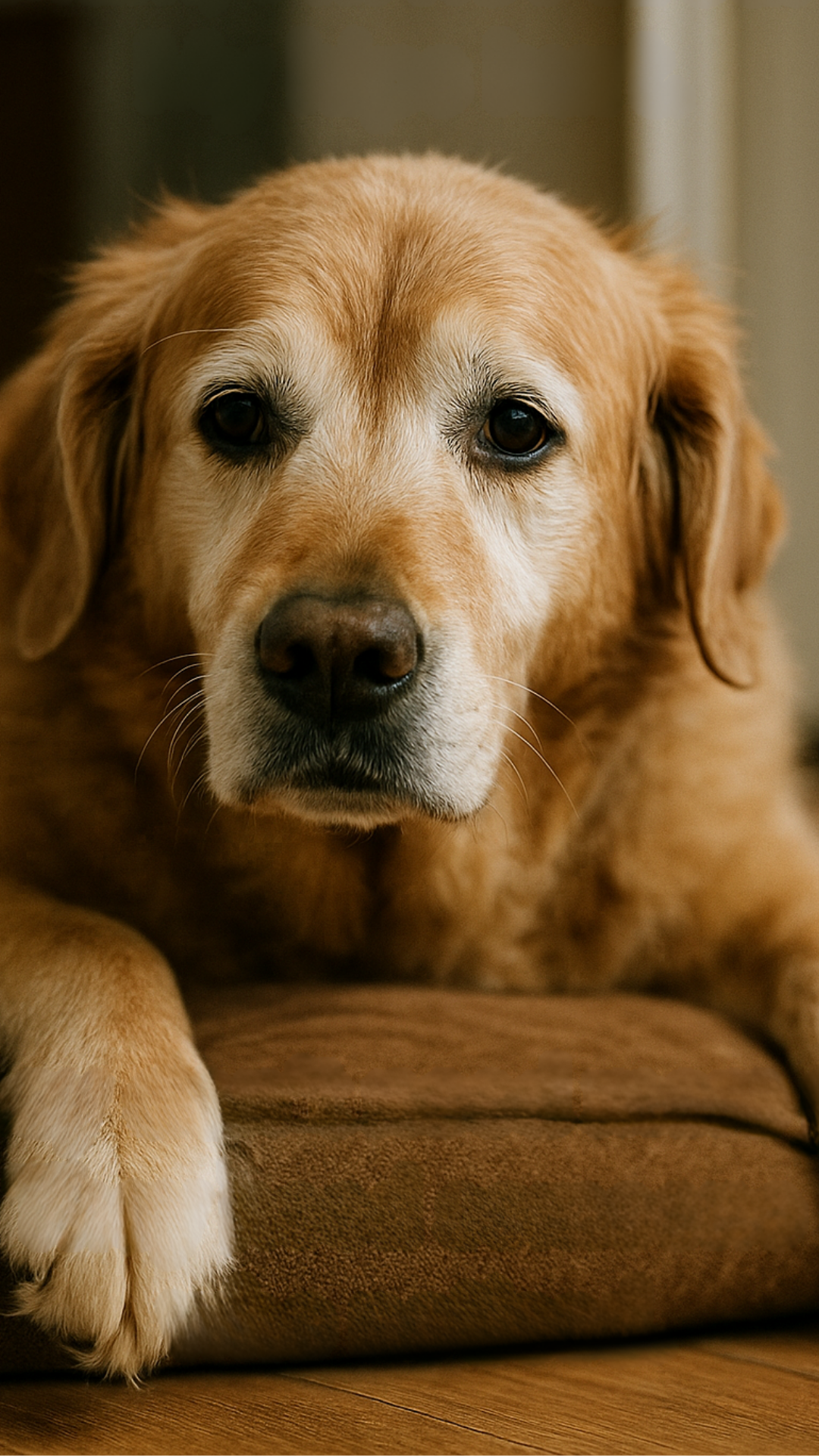
New Research Shows Joint Chews May Affect Senior Dogs' Organs
Here's what chews & powders supplement companies don't tell you about senior dogs: By age 7+, most dogs already have some degree of liver or kidney decline. It's normal aging. But oral supplements must be processed through these same organs every single day. Effects of chew also often plateau in 5-6 months for many pets.
Every day your dog takes those chews, their liver and kidneys have to work to process: •Synthetic MSM • Animal-derived chondroitin •Lab-made chemicals •Artificial flavours and preservatives.
For a senior dog with already-declining organ function, & a sensitive stomach that's a daily tax their body can't afford. Our rub? Applied topically. Zero organ processing required.
See FAQ 10 more more information.
Frequently Asked Questions (FAQs)
1. What is the Aches & Pains Rub made of, and is it safe for my pet?
The rub is made from prescision dose pet safe botanicals to target not only pain but the mental & emotional impact from carrying it. These are: Arnica, Cedarwood, Ginger, Frankincense, Clary Sage, Peppermint & Coconut. That's it, no hidden ingredients.
2. What clinical resources did you use?
Academic Journal Articles
- BOSWELLIA CARTERII:
Biagi, G., et al. (2023). Boswellia's pain-relieving and anti-inflammatory effects. PharmaAdvances. - Cardeccia, M. L., Elam, L. H., Deabold, K. A., et al. (2022). A pilot study examining a proprietary herbal blend for the treatment of canine osteoarthritis pain. Frontiers in Veterinary Science, 9. PMC: PMC8682926.
- Caterino, C., Aragosa, F., Della Valle, G., Costanza, D., et al. (2021). Clinical efficacy of Curcuvet and Boswellic acid combined with conventional nutraceutical product: An aid to canine osteoarthritis. PLOS ONE, 16(5). DOI: 10.1371/journal.pone.0252279.Reichling,
- J., Schmokel, H., Fitzi, J., et al. (2004). Dietary support with Boswellia resin in canine inflammatory joint and spinal disease. Schweizer Archiv für Tierheilkunde, 146(2), 71-79. PMID: 14994484.ARNICA MONTANA:
- Cassu, R. N., et al. (2011). Arnica for muscle soreness. Ciência Rural.Travagin, D. R. P., de Souza Balbueno, M. C., et al. (2022). Use of homeopathic Arnica montana 30cH for postoperative analgesia in female dogs undergoing elective ovariohysterectomy. Homeopathy, 111(1), 42-49. DOI: 10.1055/s-0041-1732352.
- ZINGIBER OFFICINALE (GINGER):
Javdani, M., Aali, A., Mohebi, A., et al. (2021). Oral administration of ginger rhizome powder and postoperative inflammation indices in ovariohysterectomized dogs. Iranian Journal of Veterinary Surgery, 16(1), 45-52. - G. B., Silvestre, R. C., Silvestre, J. Q. (2013). Ectoparasiticidal effect of virgin coconut (Cocos nucifera) oil shampoo in dogs. E–International Scientific Research Journal.Viste, G. B., Silvestre, R. C., Tabije, N. B., & Silvestre, J. Q. (2013). Efficacy of virgin coconut (Cocos nucifera) oil soap against mange in dogs. International Scientific Research Journal.
- MENTHAE PIPERITAE (PEPPERMINT):
McCaskill, L. D. (2021). The use of essential oils in traditional Chinese veterinary medicine: small animal practice. American Journal of Traditional Chinese Veterinary Medicine, 16(2), 73-82. [Specifically mentions peppermint EO for cooling properties in dogs]Bell, K. L. (2012). - Holistic aromatherapy for animals: A comprehensive guide to the use of essential oils & hydrosols with animals. Findhorn Press. [Includes peppermint for headaches and pain relief in animals]
- SALVIA SCLAREA (CLARY SAGE):
EFSA Panel on Additives and Products or Substances used in Animal Feed. (2024). Safety and efficacy of a feed additive consisting of an essential oil derived from the flowering stems of Salvia sclarea L. (clary sage oil) for use in all animal species. EFSA Journal, 22(10), e9016. DOI: 10.2903/j.efsa.2024.9016.Hershey, B. (2023). - Integrative therapies for palliative care of the veterinary cancer patient. In Hospice and Palliative Care for Companion Animals (Chapter 11). Wiley Online Library. DOI: 10.1002/9781119808817.ch11. [Mentions clary sage for pain relief in veterinary cancer patients]
- CEDRUS ATLANTICA (ATLAS CEDAR):
Tufan-Cetin, O., & Cetin, H. (2023). Exploring the larvicidal and repellent potential of Taurus cedar (Cedrus libani) tar against brown dog tick. MDPI Molecules, 28(23), 7689. [Related cedar species against dog parasites]
Dog-Related Studies (Botanical Mixtures)
- Amer, A. M., & Amer, M. M. (2020). Efficacy and safety of natural essential oils mixture on tick infestation in dogs. Advances in Animal and Veterinary Sciences, 8(4), 398-407.
Professional Veterinary Sources
- GINGER:
VCA Animal Hospitals. (n.d.). Ginger. VCA Know Your Pet series. Retrieved from https://vcahospitals.com/know-your-pet/gingerBOSWELLIA: - PetMD Editorial Team. (2019, October 3). 4 botanicals that are natural anti-inflammatories for dogs. PetMD. [Recommends 300mg Boswellia twice daily for 50lb dogs]ATLAS CEDAR:
- Whole Dog Journal Editorial Team. (2016, November 30). Top 20 essential oils for dogs. Whole Dog Journal. [Lists Atlas Cedar for circulation improvement]
Integrative Veterinary Practitioners
- Dr. Janet Roark, DVM - Essential Oil Vet (essentialoilvet.com)•Provides specific dosage and dilution ratios for essential oils in pets•Animal Aromatherapy Specialist Certification creator
- Dr. Melissa Shelton, DVM - animalEO Essential Oils (animaleo.info)•Author of "The Animal Desk Reference II: Essential Oils for Animals"•Formulates veterinary-grade essential oils including your ingredients
- Dr. Barbara Hershey, DVM - Integrative Veterinary Medicine•Published researcher specifically mentioning clary sage for pain management in veterinary palliative care
- Wynn, S. G., & Fougère, B. J. (2009). Veterinary herbal medicine: A systems-based approach. Veterinary Herbal Medicine. PMC: PMC7151902. [Comprehensive review of herbal medicine in veterinary practice including botanical ingredients]
3. My dog has kidney issues (or liver issues) & is on medication. What are the interactions?
Interaction & Organ Impact
Because our rub is applied topically and used in small amounts, only minimal absorption occurs. The tiny amount that reaches the bloodstream is very unlikely to place stress on the kidneys or liver.
In fact, topical formulas like ours are often the preferred choice for palliative pets, those with existing organ concerns, or pets already taking multiple medications — precisely because this route avoids most drug interactions.
None of our ingredients have documented interactions with commonly prescribed veterinary medicines when used topically at pet-safe dilutions, as is the case with our formula.
4. What are signs a dog or cat is in pain?
Pain in pets can be hard to detect, but common signs include:
- Behavioral Changes: A pet may become withdrawn, more aggressive, or less interested in interaction.
- Limping or Stiffness: Difficulty walking, climbing stairs, or moving normally can indicate joint pain or injury.
- Appetite Loss: Decreased eating or refusal to eat can signal pain, particularly in dental or abdominal issues.
- Vocalising or Whining: Whimpering, growling, or excessive vocalising when touched or moving is often a sign of discomfort.
- Excessive Licking or Grooming: Pets may lick or chew at a painful spot in an attempt to relieve discomfort.
- Panting or Increased Breathing: Rapid breathing or panting can occur when a pet is in pain, especially with conditions like arthritis or injuries.
See our blog section for more information on pain recognition & quality of life.
5. How quickly does the pain relief work?
We want to be upfront: the rub is a muscle and movement support, not a cure for arthritis.
- The rub begins working immediately after application, targeting muscles and fascia where pain often hides.
- Its powerful botanical blend including Arnica, Cedarwood, and Ginger penetrates deep to:
-Support circulation and tissue recovery
-Ease stiffness and discomfort
- Promote freer, more comfortable movement
How fast can you expect results?
- Many dogs show noticeable improvement in mobility and comfort after the first application.
- For flare-ups or more severe arthritis, applying twice weekly helps maintain relief and encourages regular movement.
Remember: every dog is different; some may respond quickly, others gradually. The key is consistent use alongside regular veterinary care.
6. Can the rub help my pet stay comfortable during colder months?
The Ginger in the rub enhances circulation, which helps to keep your pet warm and comfortable, especially for older pets or those with mobility issues. It can support your pet's temperature regulation during colder months by promoting warmth and comfort. As for Peppermint, while it has a cooling effect when applied topically, it does not counteract the warming effects of Ginger in this formulation. The cooling and warming properties can work synergistically, offering a balance that helps with pain relief, muscle relaxation, and overall comfort without conflicting effects. The Peppermint primarily helps to soothe muscles, reduce inflammation, and promote relaxation. Together, the ingredients create a well-rounded effect that supports your pet through both temperature regulation and relief from aches and pains.
7. My dog has long hair and or a double coat. How do I actually get it to their skin?
For dogs with thick or long coats, we recommend parting the fur to expose the skin before applying the spray directly to the affected area. Gently massage the spray into the skin to ensure it reaches the underlying muscles.
For best results, please follow the massage technique demonstrated by Dr. Erica at the bottom of the page. This will help target the muscles more effectively and provide greater relief for your dog.
8. But wait you use botanicals?
Misinformation online has created confusion around certain botanicals such as peppermint and pets, but when used appropriately, peppermint is not only safe, it can be therapeutic.
Peppermint has long been used in veterinary and grooming products for its cooling, soothing, and circulation-boosting properties. The concern about toxicity arises from cases involving undiluted peppermint essential oil or excessive ingestion, neither of which applies to our formula.
As with any ingredient (including common medications or supplements), toxicity is a matter of dosage. When used in the right amounts, peppermint offers real muscular and skin benefits.
In fact, peppermint is widely used today across many trusted UK food brands.
We always follow safe formulation practices using pet-safe dilutions, and our peppermint content meets veterinary safety standards.
- Buck, W. B., Osweiler, G. D., & Van Gelder, G. A. (1981). Clinical and diagnostic veterinary toxicology (3rd ed.). Kendall/Hunt Publishing Company.
- Pooch & Mutt. (2023). Can dogs eat mint? Retrieved from https://www.poochandmutt.co.uk/blogs/can-dogs-eat/mint
- Healthful Pets. (n.d.). Mint – is it safe for pets? Retrieved from https://www.healthfulpets.co.uk/ingredients/ingredient-mint
- Cohen, M., & Russo, M. (2013). Safety issues relating to the use of essential oils in dogs and cats. International Journal of Aromatherapy, 23(1), 15–22. https://doi.org/10.1016/j.ijat.2013.01.003
9. Is this like Deep Heat but for dogs?
Our rub works in a similar way to warming muscle creams, but it’s made with dog-safe botanicals and formulated by a UK vet pharmacist.
10. What are the effects of joint chews on kidneys & liver?
Multiple studies published in veterinary journals including: Topics in Companion Animal Medicine (2024), Journal of Veterinary Emergency and Critical Care (2021), and Frontiers in Veterinary Science (2023) document cases of liver failure, kidney damage, and multi-organ dysfunction from joint supplements.
The ASPCA Animal Poison Control Center reported 21 cases of joint supplement toxicity in just two years, with documented liver and kidney damage requiring emergency treatment.
Complete Study Citations:
1. Acute Manganese Toxicosis (2024)
Authors: Jaffey, JA, Chamberlin, T, Hu, JTitle: "Acute manganese toxicosis related to joint health supplement ingestion in two dogs"Journal: Topics in Companion Animal Medicine, 2024DOI/Link:https://www.sciencedirect.com/science/article/pii/S1938973624000321Key Finding: "Manganese concentrations in liver and kidney tissue were severely increased. Dog 2 developed a severe acute liver injury and was hospitalised for 6 days."
2. Multiorgan Dysfunction Syndrome (2015)
Title: "Multiorgan dysfunction syndrome secondary to joint supplement overdosage in dogs"Journal: PMC (PubMed Central)PMC ID: PMC4357907Link:https://pmc.ncbi.nlm.nih.gov/articles/PMC4357907/Key Finding: "Dogs with a history of joint supplement overdosage should be evaluated and monitored for acute liver failure, coagulopathy, and acute kidney injury."
3. Joint Supplement Toxicity Case Report (2023)
Title: "Case report: Treatment of joint supplement toxicity resulting in multiple organ dysfunction"Journal: Frontiers in Veterinary ScienceDate: June 28, 2023Link:https://www.frontiersin.org/journals/veterinary-science/articles/10.3389/fvets.2023.1141978/fullKey Finding: "In veterinary medicine, reports of joint supplement toxicity are rare. From 2008 to 2009, the Animal Poison Control Center reported 21 cases of joint supplement toxicity."
4. Acute Liver Failure from Manganese (2014)
Authors: Borchers, A, Epstein, SE, Gindiciosi, B, et al.Title: "Acute enteral manganese intoxication with hepatic failure due to ingestion of a joint supplement overdose"Journal: Journal of Veterinary Diagnostic Investigation, 2014DOI:https://journals.sagepub.com/doi/abs/10.1177/1040638714544316Key Finding: "The liver and kidneys contained 63.4 and 25.5 mg/kg of manganese, leading to liver failure."
5. Multiple Organ Dysfunction Treatment (2021)
Authors: Weatherson, HO, Bellis, T, Tse, YTitle: "The successful treatment of multiple organ dysfunction syndrome and severe hypernatremia, secondary to joint supplement toxicity in a dog"Journal: Journal of Veterinary Emergency and Critical Care, 2021DOI:https://onlinelibrary.wiley.com/doi/abs/10.1111/vec.13033Key Finding: Joint supplements caused "kidney failure, coagulopathy, and liver necrosis with inflammation."
6. ASPCA Poison Control Data
Source: ASPCApro.orgTitle: "Overdoses of Oral Chondroprotective Agents"Link:https://www.aspcapro.org/resource/overdoses-oral-chondroprotective-agentsKey Finding: "From 2008 to 2009, the Animal Poison Control Center reported 21 cases of joint supplement toxicity. Significant elevations in manganese levels were found in the liver and the kidney."
7. VCA Animal Hospitals Clinical Information
Source: VCA Animal HospitalsTitle: "Glucosamine Chondroitin Combination"Link:https://vcahospitals.com/know-your-pet/glucosamineKey Finding: "Effects can be longer in pets with liver or kidney disease."
8. Joint Supplements Potential for Harm
Source: GWF NutritionTitle: "Joint Supplements: Potential for Harm"Link:https://www.gwfnutrition.com/pages/knowledge-base-joint-supplementsKey Finding: "Elevated liver and renal manganese led to liver failure... liver, kidney and articular cartilage."
Additional Supporting Research:
9. Glucosamine Bioavailability Study (2017)
Authors: Bhathal, A, Spryszak, M, Louizos, C, Frankel, GTitle: "Glucosamine and chondroitin use in canines for osteoarthritis: A review"Journal: Open Veterinary Journal, 2017Key Finding: Reviews renal functions and potential complications in dogs taking glucosamine/chondroitin.
10. Over-Supplementation Risks
Source: VentturaTitle: "Risks of Over-Supplementing Glucosamine & Chondroitin - Dogs"Link:https://venttura.com/blogs/neutraceuticals/detriments-of-glucosamine-chondroitin-over-supplementation-dogsKey Finding: "Excessive glucosamine and chondroitin supplementation can harm dogs. Learn about liver damage, kidney strain, and other risks from overuse of joint supplements."
Summary of Evidence:
•21 documented cases reported to ASPCA Poison Control (2008-2009)•Multiple peer-reviewed studies showing liver and kidney damage•Hospitalization required in severe cases (6+ days documented)•Manganese accumulation in liver and kidney tissue•Multi-organ dysfunction documented in veterinary journals•Longer effects in pets with existing organ disease
From Stiff Steps to Smooth Strides. Weekly Relief That Releases The Pain.

Targets pain messengers at the source for real relief.
This rub is designed to help lower levels of Substance P — a key chemical that carries pain signals to the brain. Less Substance P means fewer “ouch” messages, more comfort, and freer movement.
For best results, massage the rub in with slow, firm circles. This spreads it evenly, encourages deeper absorption into sore tissues, and targets relief exactly where your dog needs it most.
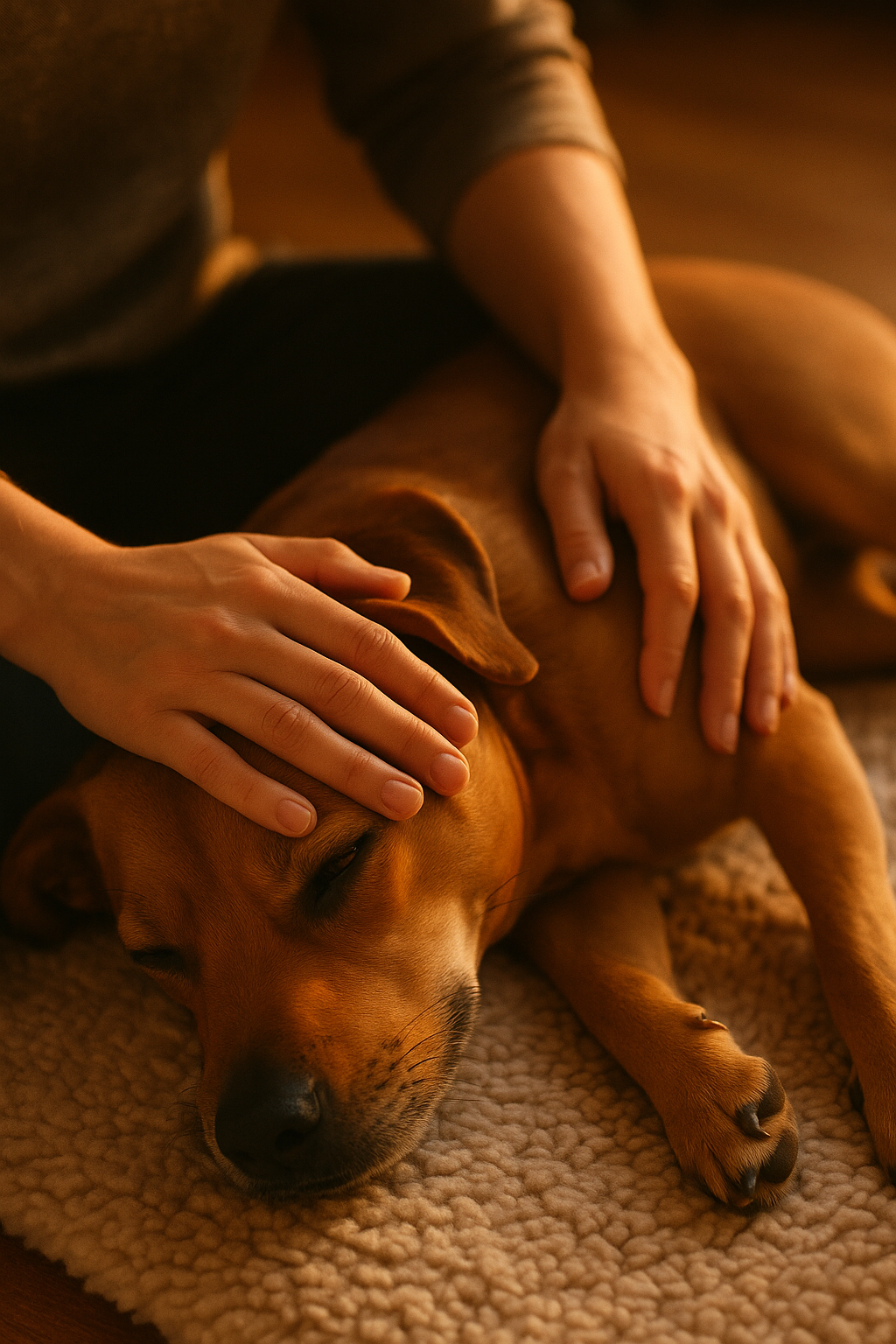
Chronic Pain Hits Different Needing a Multimodal Approach.
Chronic pain in dogs often involves not just the joint, but the muscles, nerves, fascia, and the brain’s ongoing response to discomfort.
The more angles we address, the better the outcome.
That’s why our rub works on muscles, circulation, nerve signals, and rest bringing relief from every direction.
Don’t wait for pain to get louder. Start your dog’s relief plan today.
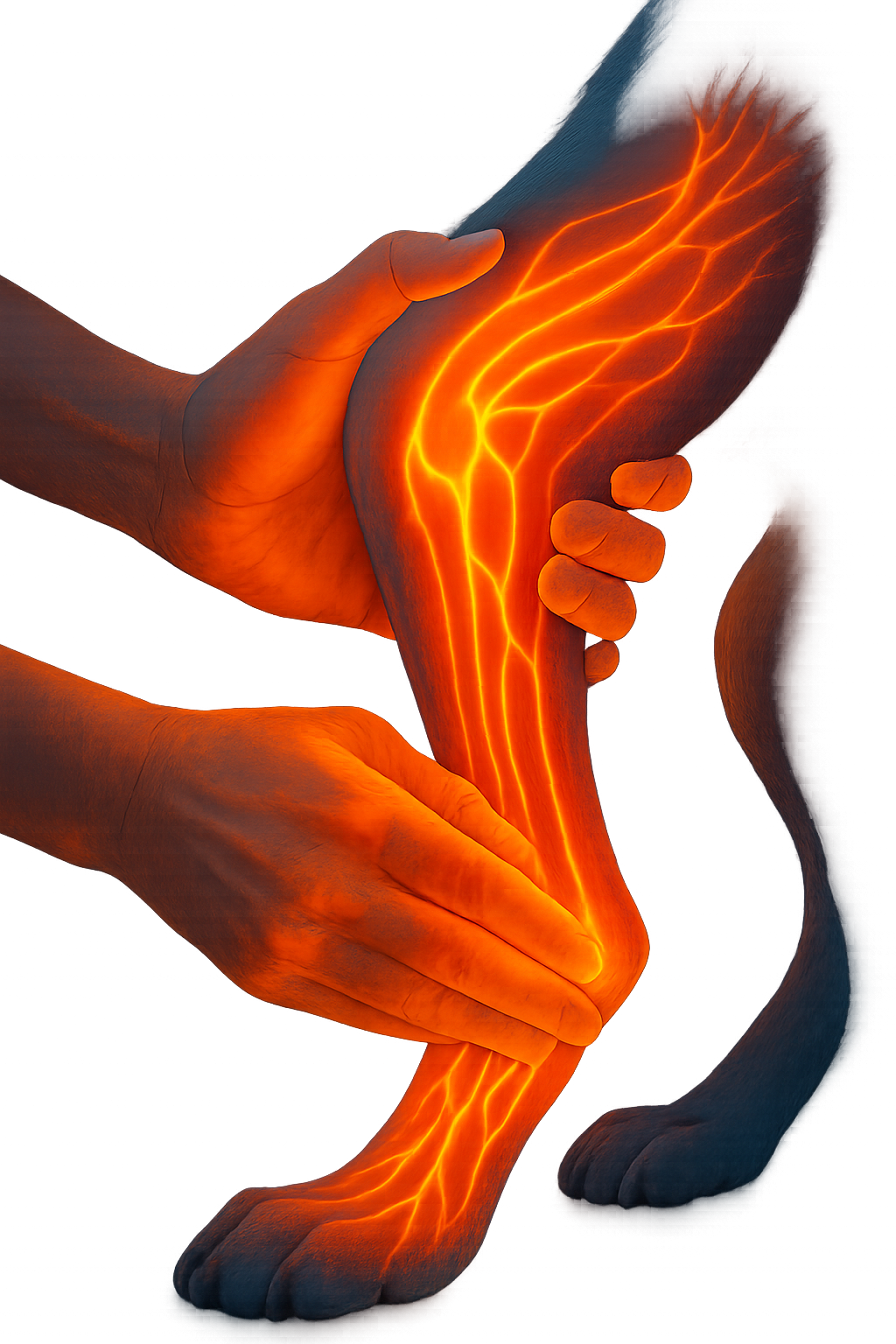
Break the Pain & Restlessness Cycle
After the application of the rub, the brain also gets the “all good” message. It starts to dial down stress chemicals that make muscles clamp tight.
Looser muscles open tiny vessels, letting fresh, oxygen-rich blood wash into tired joints and carry inflammatory chemicals away.

One weekly session that restores more than mobility
Chronic pain isn’t just physical, it’s also emotional and behavioural.
Most dogs with pain or stiffness are given pills, chews, or powders. They can help in one way, usually by feeding the joint or dulling pain signals, but they miss the bigger picture.
The rub tackles all of it in one ritual. It's the missing piece.

NATURE'S OWN PHARMACY
In the wild, dogs instinctively sought out plants with soothing, healing properties. We’ve brought that home. It’s the same natural care their ancestors relied on now ready to help your pet feel their best.

3 FOR 1 PRODUCT BUNDLE
PANDORA STYLE PURE SILVER TALISMAN! *Disclaimer: only while stocks last.
Pure Silver (925 Stamped) Talisman
ACHES & PAINS RELIEF RUB FOR DOGS - HIPS, JOINTS & MUSCLES (50 ml)
These numbers tell the story and why it’s time to act sooner.
35%
Arthritis affects 35% of all dogs over 1 year of age.
24%
24% of dogs aged 8 months to 4 years already show signs of arthritic pain.
50%
Half of arthritic dogs aren’t diagnosed until after age 8 often when it’s already advanced.
Hip Dysplasia & Pain Development
It starts as tension. The signs are subtle. But the pain is real, especially in large and active breeds.
Breeds Affected
Up to 80% of large-breed dogs like Labs, Staffies, German Shepherds, Goldens, Rottweilers, Bernese, Danes, Saint Bernards, Cane Corsos, Boxers & Border Collies show signs by age 2 to 3.
While less common, hip dysplasia can also affect smaller dogs especially Frenchies, Cockers & Pugs often going unnoticed until later in life.
Early Warning Signs
• Bunny hopping
• Swaying or weak back legs
• Sloppy sits
• Hesitant to jump or climb
• Slower to rise
• Licking hips or groin
• Less playful or more withdrawn
• Shifting weight onto front legs
• Avoiding or taking stairs cautiously
• Awkward standing posture or turned-out hind feet
Why This Rub Matters
Hip dysplasia doesn’t just affect the bones, it starts with a shallow joint, but the pain comes from how the body compensates.
Muscles tense. Fascia tightens. Nerves get compressed.
Your dog guards every step. This guarding builds tension, stiffness, and fatigue long before any limp appears.
This rub interrupts that cycle.
It calms overworked muscles, releases fascia, boosts blood flow, and relieves the soft tissue pain that no X-ray can see.
What does that mean for your dog?
Less guarding. Less flinching. More ease. More rest. The quiet return of their spark.
If you have any questions, you are always welcome to contact us. We'll get back to you as soon as possible, within 24 hours on weekdays.
-
Shipping Information
All parcels are dispatched through our reliable courier service, Royal Mail, with 48-hour tracked delivery.
-
Customer Support
For any customer support inquiries, please email us at info@myfurbabies.co.uk or use our contact page for assistance. We're here to help!
-
FAQ’s
Blog posts
The Complete Guide to Dog Coats: What Every Pet Parent Needs to Know in 2025
Chronic Pain, Muscle Loss, and Early Mortality in Senior Dogs: The Hidden Threat of Sarcopenia

Have questions about your pet's skincare or medication? Our expert veterinary pharmacists are here to help! Submit your queries, and we'll provide personalised, curated answers just for you & share this in our bulletins & blogs.
Exclusive Benefits: Be the first to learn about our new collections and exclusive offers. Enjoy 10% off your first order as a special welcome gift.
- Choosing a selection results in a full page refresh.
- Opens in a new window.


